Mongols believed 5th Dalai Lama was someone else

The applique thangka of Tulku Drakpa Gyeltsen that Matthew Kapstein came across during his research and travels in Mongolia. Kapstein discovered that some Mongols believed Tulku Drakpa Gyeltsen was the real and unmistaken reincarnation of the 4th Dalai Lama, and should have been enthroned as the 5th Dalai Lama. Click to enlarge.
Dear friends around the world,
Some friends of mine recently came across this document which they found to be quite interesting. The article is actually an examination of the validity of a terma text which was practised by His Holiness 5th Dalai Lama. But what’s really interesting is that at the beginning of the article, it says that Tulku Drakpa Gyeltsen was the real 5th Dalai Lama!
This is not unusual, by the way. There are other examples of other lamas in Tibetan Buddhist history where the wrong or mistaken candidate was enthroned for financial or political reasons. Or they were enthroned under different names to protect them, or because their original incarnation lineage was banned. For example, Pabongka Rinpoche was not recognised as the reincarnation of Changkya Rolpai Dorje (a tutor of the Chinese Emperor Qianglong) because the name had associations with China. At the time of his birth, there were political troubles between Tibet and China and therefore, to protect him during this time of political sensitivity, he was recognised as the reincarnation of the Abbot of Pabongka Monastery. It was a much ‘smaller’ and unknown recognition compared to being recognised the reincarnation of the Chinese Emperor’s tutor. He should have, by right, been recognised as the reincarnation of Changkya.
Even the tutor of His Holiness the 14th Dalai Lama, the famed Trijang Rinpoche Lobsang Yeshe Tenzin Gyatso had a rival challenge his recognition as Trijang Rinpoche when he was younger. It got to the point the rival claimant’s family plotted to kidnap and even kill Trijang Rinpoche. Thankfully, their claim was resoundingly rejected by the Tibetan establishment of the day and the rightful Trijang Rinpoche was able to ascend to the throne. Even the Lady Lhalu Lhacham Yangdzom Tsering, a student of Kyabje Pabongka Rinpoche had, when she was younger, been considered a candidate for the recognition of the 12th Dalai Lama! That is an interesting story which you have to read at another time.
There are also modern-day recognitions which are still disputed like that of the 17th Karmapa. In any case, these types of disputed enthronements or recognitions are not exclusive to Tibetan Buddhism, and have been known to take place in the secular world too. Until her death, Queen Elizabeth I faced criticism and people challenged the legitimacy of her throne because she had been declared the illegitimate daughter of her father, King Henry VIII. And in spite of her immense power, the Empress Dowager Cixi was criticised as a pretender to the throne of China; being a woman, it was not possible for her to assume ultimate power and rule over all of China.
So it is not surprising that Mongols thought that the wrong candidate was enthroned as the 5th Dalai Lama, and it should have been Tulku Drakpa Gyeltsen. Whatever the case may be, in the end Tulku Drakpa Gyeltsen was recognised as a lama of Zimkhang Gongma and as you know, Tulku Drakpa Gyeltsen was a contemporary and Dharma brother of the 5th Dalai Lama. When he was very young, Tulku Drakpa Gyeltsen was one of the potential candidates to be recognised as the 5th Dalai Lama. In the end, another boy was enthroned as the 5th Dalai Lama while Tulku Drakpa Gyeltsen was recognised and enthroned as the reincarnation of luminaries such as Panchen Sonam Drakpa and Duldzin Drakpa Gyaltsen, one of the heart disciples of Je Tsongkhapa.
As they grew up, the 5th Dalai Lama and Tulku Drakpa Gyeltsen became very close and were considered Dharma brothers. They were both educated in and became incumbent lamas of Drepung Monastery, and had the same illustrious teacher which is His Holiness the 4th Panchen Lama Lobsang Chokyi Gyaltsen. Of course as you know, the 5th Dalai Lama later rose to become a huge unifying and political force in Tibet, while Tulku Drakpa Gyeltsen was widely respected as an erudite scholar and lama, who was later murdered and arose as the Dharma Protector Dorje Shugden.

The inscription at the bottom of the Mongolian thangka of Tulku Drakpa Gyeltsen. It reads “Drakpa Gyeltsen” in Tibetan script. The thangka is currently in Erdene Zuu Monastery in Mongolia. Click to enlarge.
So this academic article is important because it is a scholarly analysis in which the author makes the clear, objective statement that Tulku Drakpa Gyeltsen was the real 5th Dalai Lama. This type of statement which is made without bias, is totally contrary to what the Central Tibetan Administration (CTA) say about Tulku Drakpa Gyeltsen. The CTA, who are the Tibetan leadership in exile, falsely claim that Tulku Drakpa Gyeltsen died and returned as an angry, vengeful spirit. But that does not make sense because how can someone who is qualified enough to potentially be the 5th Dalai Lama, also have the potential to return as a so-called spirit? If you believe the Dalai Lama to be an emanation of Chenrezig, how can someone who was going to be recognised as an emanation of Chenrezig end up as a spirit? That is illogical.
The point is even if he didn’t get enthroned as the 5th Dalai Lama, as a child Tulku Drakpa Gyeltsen exhibited very special spiritual qualities and attainments to be even considered. He was a naturally very spiritual and highly realised being; in the end, he was recognised as the reincarnation of luminaries like Panchen Sonam Drakpa who is the only person to have ever served as the abbot of Gaden, Sera and Drepung Monasteries. Panchen Sonam Drakpa also became the 15th Gaden throne-holder and by the end of his life, had authored 14 volumes of texts. These texts constitute the main syllabus that continues to be used in most Gelugpa monasteries today, especially by Drepung Loseling and Gaden Shartse.
So Tulku Drakpa Gyeltsen was recognised as the reincarnation of this illustrious scholar and practitioner who was so highly attained, that his texts have been used to teach thousands of monks how to practise and gain enlightenment. And just like his predecessor, Tulku Drakpa Gyeltsen grew up to be very learned, extremely beneficial and saintly, and his teachings were highly sought-after; during large events, before the Dalai Lama took power in Tibet, Tulku Drakpa Gyeltsen’s throne was set up equal to his Dharma brother the 5th Dalai Lama. The 5th Dalai Lama and Tulku Drakpa Gyeltsen are both high incarnations who hail from Drepung Monastery and as Dharma brothers, they received the same teachings from the same teacher (His Holiness the 4th Panchen Lama) and spent much time together, according to multiple sources.
Even after Tulku Drakpa Gyeltsen died and arose as the Dharma Protector Dorje Shugden, the Great 5th Dalai Lama had special prayers done for him, and also hand-made a statue of Dorje Shugden and built a special chapel in Lhasa (Trode Khangsar) dedicated to his late friend Tulku Drakpa Gyeltsen. The Great 5th Dalai Lama even acknowledged that his spiritually-attained friend Tulku Drakpa Gyeltsen arose, as he said he would, in the form of the powerful protector Dorje Shugden by composing a prayer to Dorje Shugden for everyone to recite. This prayer has been translated into English. So there are many signs of their closeness, with both of them sharing so many similar spiritual qualities that both were seen equally as candidates to become the Great 5th Dalai Lama.
Anyway, I had my students extract for you below some of the sections that mention Tulku Drakpa Gyeltsen. In the text below, Tulku Drakpa Gyeltsen is referred to as Gzims-khang-gong sprul-sku, or Zimkhang Gong Tulku which means the reincarnate lama (tulku) of Zimkhang Gongma, which was the name of Tulku Drakpa Gyeltsen’s Ladrang (a lama’s private household) in Drepung Monastery. I thought some of you might find these extracts educational and interesting. Please do read it carefully and leave me your thoughts below.
Tsem Rinpoche
Another view of the Tulku Drakpa Gyeltsen thangka that Matthew Kapstein came across in Mongolia. People only commission and sponsor thangkas of lamas and deities that they have faith in and want to worship. The central figure will be the main object of the commissioner’s worship and focus of their faith. In this thangka, Tulku Drakpa Gyeltsen is the central figure. Above him, Kapstein writes that from left to right are the Mongolian lama Jetsundampa Zanabazar, Vajradhara, and Green Tara. Furthermore, Kapstein also states that below him are Yellow Dzambala, Six-Armed Mahakala and Kalarupa.
If Tulku Drakpa Gyeltsen is supposed to have taken rebirth as a so-called spirit, how is someone supposed to make offerings and pay homage to the enlightened deities in this thangka? So it does not make sense when the Tibetan leadership say that Tulku Drakpa Gyeltsen died and became a so-called evil spirit. How can someone who could have been recognised as the 5th Dalai Lama, and someone who is worthy of appearing as a central figure in a thangka with enlightened deities, end up as a spirit? Click to enlarge.
Gter-Ma (Terma) as Imperial Treasure:
the 1755 Beijing Edition of Padma Bka’ Thang (Pema Kathang)
Click here to download the PDF
It is 1719, at the height of the Zunghar invasion of Central Tibet, and Sle-lung (Lelung) has been ordered to appear at the offices of the Zunghar administration in Lhasa:
Once the lord ordered me to come to the Khrom-gzigs-khang (Tromzigkhang). The lord and Chos-’phel-can (Chophel Chen), who was there, had many questions about the situation and whether or not O-rgyan (Urgyan) was reliable. About the All-knowing Great Fifth, in general and in particular, to their question as to whether Ngag-dbang-blo-bzang-rgya-mtsho (Ngawang Lobsang Gyatso) was Rgyal-ba Yon-tan-rgyamtsho’s sprul-sku (Gyalwa Yonten Gyatso’s tulku), I responded: “What do I know? The former all-knowing Paṇ-chen (Panchen) and other reliable holy persons performed the recognition without error, declaring him to be the Exalted Fifth.” To which they said, “It seems that the Paṇ-chen Rin-po-che (Panchen Rinpoche) did not perform such a recognition. It was the Gzims-khang-gong sprul-sku (Zimkhang Gong Tulku) who was the inerrant birth of Yon-tan-rgya-mtsho (Yonten Gyatso). Because Ngag-dbang-blo-bzang-rgya-mtsho (Ngawang Lobsang Gyatso) was jealous at that he was angered and his intentions toward those who were close were not at ease. In our land, we call the Gzims-khang-gong sprul-sku (Zimkhang Gong Tulku) the Bha-ga ta-la’i bla-ma (the ‘little’ [< Mong. baɣa] Dalai Lama).”1
~ Kapstein, Matthew T. (2015). Gter-Ma as Imperial Treasure: the 1755 Beijing Edition of Padma Bka’ Thang, Revue d’Etudes Tibétaines, Vol 31, pp. 167-187.
Gzims-khang-gong sprul-sku is read as Zimkhang Gong Tulku, and this refers to Tulku Drakpa Gyeltsen who was recognised as the reincarnate lama (tulku) of Zimkhang Gongma which is the name of his Ladrang (a lama’s private household) in Drepung Monastery. After Tulku Drakpa Gyeltsen was murdered by jealous attendants of the 5th Dalai Lama, his Ladrang was dissolved and the search for his reincarnation was banned.
In any case, this highlighted sentence is saying very clearly and unequivocally that there were people during the 5th Dalai Lama’s time who fully believed that Tulku Drakpa Gyeltsen was the 5th Dalai Lama i.e. the unmistaken reincarnation of the 4th Dalai Lama Yonten Gyatso (Yon-tan-rgya-mtsho). This conversation that Matthew Kapstein is quoting comes from the autobiography of Lelung Zhepa’i Dorje (1697-1740).
But my own attention was drawn above all to these initial lines, for, just a few days before, while visiting the monastery of Erdeni-zuu, I had been surprised to see there an appliqué thang-ka (thangka) of a figure labeled as Grags-pa-rgyal-mtshan2 (Drakpa Gyeltsen). This is perhaps none other than the Gzims-khang-gong-ma sprul-sku (Zimkhang Gong Tulku) referred to above and the focal point of much acrimony in contemporary Tibetan Buddhism; for it was this figure who, following his suicide (1654), which was presumed to have been an outcome of his rivalry with the Fifth Dalai Lama, would later reemerge as the contentious spirit Rdo-rje-shugs-ldan3 (Dorje Shugden).
~ Kapstein, Matthew T. (2015). Gter-Ma as Imperial Treasure: the 1755 Beijing Edition of Padma Bka’ Thang, Revue d’Etudes Tibétaines, Vol 31, pp. 167-187.
In the course of his research, Kapstein came across a thangka of Tulku Drakpa Gyeltsen in Erdene Zuu, a monastery in Mongolia. He mentions here clearly that Tulku Drakpa Gyeltsen took rebirth as Dorje Shugden, although he inaccurately states this was the result of suicide (in fact, Tulku Drakpa Gyeltsen was murdered by the 5th Dalai Lama’s jealous attendants).
Nevertheless, the fact this thangka exists is proof of Tulku Drakpa Gyeltsen’s nature as an enlightened being. People will only sponsor and commission thangkas of lamas and deities that they have faith in and will worship. No one would commission and preserve the thangka of a lama who later became what the CTA claims is a so-called spirit.
The testimony of Sle-lung (Lelung) confirms that some factions among the Mongols had decided at a relatively early date that the Gzims-khang-gong-ma Grags-pa-rgyal-mtshan (Zimkhang Gongma Drakpa Gyeltsen) was the authentic rebirth of the Fourth Dalai Lama, Yon-tan-rgya-mtsho (1589-1617; Yonten Gyatso). I have not yet been able to determine whether this opinion was shared by the leading Khalkha hierarch, Rje-btsundam-pa Zanabazar (1635-1723; Jetsun Dampa Zanabazar), who is depicted in the upper left-hand corner of the thang-ka I saw at Erdeni-zuu.4 Be this as it may, it is notable that in Sle-lung’s (Lelung’s) text the several questions concerning the Fifth Dalai Lama are preceded by an inquiry into the reliability of O-rgyan (Urgyan), i.e. Padmasambhava. As this too is an issue that has arisen repeatedly in connection with the cult of Grags-pa-rgyal-mtshan’s (Drakpa Gyeltsen’s) apotheosis as Rdo-rje-shugs-ldan (Dorje Shugden), it is perhaps not surprising that we should find the issue debated within the Dge-lugs-pa (Gelugpa) order and among its Mongol adherents during the same period in which the dispute concerning the Fourth Dalai Lama’s true incarnation arose. It so happens, then, that a group of contested questions that might not, at first glance, seem necessarily to be connected, in due course came to be indissociably interlaced. These include the authority of the Padmasambhava traditions, the authenticity of the Fifth Dalai Lama and the status of Grags-pa-rgyal-mtshan (Drakpa Gyeltsen), as well as the paternity of the Sde-srid (Desi) and the implications this had in regard to the Fifth Dalai Lama’s monastic vows.
~ Kapstein, Matthew T. (2015). Gter-Ma as Imperial Treasure: the 1755 Beijing Edition of Padma Bka’Thang, Revue d’Etudes Tibétaines, Vol 31, pp. 167-187.
Once again Kapstein clearly states that some Mongols believed that Tulku Drakpa Gyeltsen was the 5th Dalai Lama, and the unmistaken reincarnation of the 4th Dalai Lama Yonten Gyatso.
GTER-MA (Terma) AS IMPERIAL TREASURE: THE 1755 BEIJING EDITION OF THE PADMA BKA’ THANG (Pema Kathang)
In his communication to the Thirteenth Seminar of the International Association for Tibetan Studies, held in Ulaanbataar in July 2013, Elliot Sperling introduced a remarkable passage gleaned from the autobiography of an outstanding eighteenth-century visionary, Sle-lung Bzhad-pa’i-rdo-rje (1697-1740; Lelung Zhepa’i Dorje). It is 1719, at the height of the Zunghar invasion of Central Tibet, and Sle-lung (Lelung) has been ordered to appear at the offices of the Zunghar administration in Lhasa:
Once the lord ordered me to come to the Khrom-gzigs-khang (Tromzigkhang). The lord and Chos-’phel-can (Chophel Chen), who was there, had many questions about the situation and whether or not O-rgyan (Urgyan) was reliable. About the All-knowing Great Fifth, in general and in particular, to their question as to whether Ngag-dbang-blo-bzang-rgya-mtsho (Ngawang Lobsang Gyatso) was Rgyal-ba Yon-tan-rgyamtsho’s sprul-sku (Gyalwa Yonten Gyatso’s tulku), I responded: “What do I know? The former all-knowing Paṇ-chen (Panchen) and other reliable holy persons performed the recognition without error, declaring him to be the Exalted Fifth.” To which they said, “It seems that the Paṇ-chen Rin-po-che (Panchen Rinpoche) did not perform such a recognition. It was the Gzims-khang-gong sprul-sku (Zimkhang Gong Tulku) who was the inerrant birth of Yon-tan-rgya-mtsho (Yonten Gyatso). Because Ngag-dbang-blo-bzang-rgya-mtsho (Ngawang Lobsang Gyatso) was jealous at that he was angered and his intentions toward those who were close were not at ease. In our land, we call the Gzims-khang-gong sprul-sku (Zimkhang Gong Tulku) the Bha-ga ta-la’i bla-ma (the ‘little’ [< Mong. baɣa] Dalai Lama).”[1]
In citing this passage, Elliot was in fact primarily interested in what followed this opening, for there we find an early discussion of the topic to which his communication was dedicated, the oft-repeated rumor of the Fifth Dalai Lama’s (1617-1682) paternity of his regent Sde-srid Sangs-rgyas-rgya-mtsho (1653-1705; Desi Sangye Gyatso). But my own attention was drawn above all to these initial lines, for, just a few days before, while visiting the monastery of Erdeni-zuu, I had been surprised to see there an appliqué thang-ka (thangka) of a figure labeled as Grags-pa-rgyal-mtshan (Drakpa Gyeltsen).[2] This is perhaps none other than the Gzims-khang-gong-ma sprul-sku (Zimkhang Gongma Tulku) referred to above and the focal point of much acrimony in contemporary Tibetan Buddhism; for it was this figure who, following his suicide (1654), which was presumed to have been an outcome of his rivalry with the Fifth Dalai Lama, would later reemerge as the contentious spirit Rdo-rje-shugs-ldan (Dorje Shugden).[3]
The testimony of Sle-lung (Lelung) confirms that some factions among the Mongols had decided at a relatively early date that the Gzims-khang-gong-ma Grags-pa-rgyal-mtshan (Zimkhang Gongma Drakpa Gyeltsen) was the authentic rebirth of the Fourth Dalai Lama, Yon-tan-rgya-mtsho (1589-1617; Yonten Gyatso). I have not yet been able to determine whether this opinion was shared by the leading Khalkha hierarch, Rje-btsun-dam-pa Zanabazar (1635-1723; Jetsun Dampa Zanabazar), who is depicted in the upper left-hand corner of the thang-ka (thangka) I saw at Erdeni-zuu.[4] Be this as it may, it is notable that in Sle-lung’s (Lelung’s) text the several questions concerning the Fifth Dalai Lama are preceded by an inquiry into the reliability of O-rgyan (Urgyan), i.e. Padmasambhava. As this too is an issue that has arisen repeatedly in connection with the cult of Grags-pa-rgyal-mtshan’s (Drakpa Gyeltsen’s) apotheosis as Rdo-rje-shugs-ldan (Dorje Shugden), it is perhaps not surprising that we should find the issue debated within the Dge-lugs-pa (Gelugpa) order and among its Mongol adherents during the same period in which the dispute concerning the Fourth Dalai Lama’s true incarnation arose. It so happens, then, that a group of contested questions that might not, at first glance, seem necessarily to be connected, in due course came to be indissociably interlaced. These include the authority of the Padmasambhava traditions, the authenticity of the Fifth Dalai Lama and the status of Grags-pa-rgyal-mtshan (Drakpa Gyeltsen), as well as the paternity of the Sde-srid (Desi) and the implications this had in regard to the Fifth Dalai Lama’s monastic vows.
In relation to all this, the issue of Padmasambhava appears to be in some respects tangential to the rest. Its importance in this context was no doubt due to the Great Fifth’s well-known Rnying-ma-pa (Nyingmapa) sympathies, but perhaps more precisely to his family’s ties to the old seat of the Tibetan empire in Yar-lung (Yarlung) and the sense of historical warrant that this imparted to his claims. For these reasons, perhaps, the “reliability of O-rgyan” (Urgyan) could serve as a clear, but still cautiously indirect, signifier of one’s allegiances. For the remainder of this short essay I shall therefore be concerned primarily with an aspect of the contested question of the “reliability of O-rgyan,” (Urgyan) focusing on the well-known account of Padmasambhava, the Padma bka’ thang (Pema Kathang). The reception of the text during the period of the Dga’-ldan pho-brang’s (Gaden Phodrang) rise reflects the fissure that the Fifth Dalai Lama’s robust advocacy of devotion to the Lotus Guru aroused within some factions of the Dge-lugs-pa (Gelugpa) clergy and the countervailing determination of the Great Fifth’s loyalists to uphold Padmasambhava’s cult.
***
Writing in 1782, the noted Mongol polymath Sum-pa mkhan-po Ye-shes-dpal-‘byor (1704-1788; Sumpa Khenpo Yeshe Peljor) listed the famed Testament of Padmasambhava — the Padma bka’ thang (Pema Kathang) of O-rgyan-gling-pa (var. U-rgyan-gling-pa; Urgyan Lingpa) — among inauthentic works. As in the case of the Maṇi bka’ ‘bum (Mani Kambum), which he similarly excoriated, his condemnation was not in this case directed at a marginal work preserved only by a non-mainstream sect, but at a major Tibetan revelation that had been actively promoted during the preceding centuries by leading adherents of the Dge-lugs-pa (Gelugpa) order he championed.[5] The apparent oddness of the Dge-lugs-pa (Gelugpa) embrace of the Rnying-ma-pa gter-ma (Nyingmapa terma) was underscored not just by Sum-pa mkhan-po (Sumpa Khenpo). A half century ago, the great authority on the history of Mongolian printing, Walther Heissig, in commenting upon the early eighteenth century publication in Beijing of the Mongolian translation of the Padma bka’ thang (Pema Kathang), asked just what the Dge-lugs-pa (Gelugpa) interest might have been in what he described as a Rotmützenlegende, a “red-bonnet tale.”[6] His question is precisely what concerns us here.
In naming the Padma bka’ thang (Pema Kathang) as a key example of a textual forgery, Sum-pa mkhan-po (Sumpa Khenpo) may have had it in mind that his renowned contemporary Lcang-skya Rol-pa’i-rdo-rje (1717-1786; Changkya Rolpai Dorje), the Tibetan Buddhist tutor of the Qianlong emperor, had sponsored the publication of an edition of the work in Beijing, probably in 1755. In this, Lcang-skya (Changkya) was consciously following a long-established precedent and in fact reproduced in his edition, prior to his own brief colophon, a series of earlier colophons, which together allow us to reconstruct important aspects of the reception and publication history of O-rgyan-gling-pa’s gter-ma (Urgyan Lingpa’s terma). These are in fact derived from the Sde-dge (Derge) edition, dating no doubt to the 1730s, which, as we shall see, was Lcang-skya’s (Changkya’s) immediate source. There were other precedents, too, for his publication: Heissig’s note on the Kangxi edition of the Mongolian translation has been mentioned above, and in 1730, the eighth reign year of the Yongzheng emperor, an imperial palace edition of the Maṇi bka’ ‘bum (Mani Kambum) in Tibetan had been also produced.[7]
The earliest of the colophons that are reproduced and translated below is taken from a well-known sixteenth-century edition published with the support of the Fifth Dalai Lama’s great-grandfather, the lord of ‘Phyong-rgyas (Chongye) under the Phag-mo-gru-pa (Phagmo Drupa) regime, Mi-dbang Bsod-nams-stobs-rgyal (Miwang Sonam Topgyal). He was, according to the Great Fifth, encouraged in this by his Rnying-ma-pa (Nyingmapa) teacher, the famed ‘Phreng-po gter-ston Shes-rab-‘od-zer (1518-1584; Trengpo Terton Sherab Oser), the founder of Dpal-ri (Palri) monastery (where ‘Jigs-med-gling-pa [1730-1798; Jigme Lingpa] would later be educated) and situated within Bsod-nams-stobs-rgyal’s (Sonam Topgyal’s) domains.[8] The colophon notes that, as the state of most copies of the text was editorially poor, an effort was made to produce the best possible edition, relying upon a manuscript said to have been copied directly from an earlier manuscript written in O-rgyan-gling-pa’s (Urgyan Lingpa’s) own hand, as well as an illuminated “archaic manuscript” (yig-rnying; yin nying) and, most interestingly, a printed edition from the region of E in southern Tibet, that had been published by members of O-rgyan-gling-pa’s (Urgyan Lingpa’s) own family line (gdung-brgyud; dung gyu). No trace of this early xylograph of the Padma bka’ thang (Pema Kathang) has, to the best of my knowledge, so far emerged.
Bsod-nams-stobs-rgyal’s (Sonam Topgyal’s) colophon is followed by a long poem in praise of Padmasambhava, introducing the colophon written by the Fifth Dalai Lama, in which interlinear notes (mchan-bu; chen bu) clarify the allusions made in the poem itself to “sophists” who had discredited the teaching through false views. Those named are the Rtag-brtan sprul-sku Kun-dga’-snying-po (Dakden Tulku Kunga Nyingpo), that is to say Tāranātha,[9] Rgyal-mtshan gnyug rab-‘byams-pa (Gyeltsen Nyug Rabjampa), Brag-sgo rab-‘byams-pa (Drakgo Rabjampa), and Lho-brag sprul-sku Gtsug-lag-phreng-ba (Lhodrag Tulku Tsuglag Threngwa).[10] Though the first and last mentioned are of course well-known masters of the Jo-nang-pa (Jonangpa) and Karma bka’-brgyud-pa (Karma Kagyupa) orders which the Great Fifth vociferously opposed, Brag-sgo rab-‘byams-pa (Drakgo Rabjampa), it emerges, was a Dge-lugs-pa (Gelugpa) disciple of the Fifth himself.[11] I have so far found no information concerning Rgyal-mtshan gnyug rab-‘byams-pa (Gyeltsen Nyug Rabjampa), though his title suggests that he may have also been a Dge-lugs-pa (Gelugpa). That the Great Fifth may therefore have been using the publication of the Padma bka’ thang (Pema Kathang) to mark a fault-line not just within Tibetan Buddhism generally, but even within his own church, is of considerable interest, given especially the later rejection of the text by some Dge-lugs-pa (Gelugpa), such as Sum-pa mkhan-po (Sumpa Khenpo). The Fifth’s colophon concludes by reiterating the history of the Phyong-rgyas Dpal-ri (Chongye Palri) edition, amplifying some details concerning the editorial history of the text,[12] and specifying that this new colophon is written for the publication of the work at Dga’-ldan Phun-tshogs-gling (Gaden Phuntsok Ling), the converted Jo-nang-pa (Jonangpa) seat, with the encouragements of Grong-smad-pa Sangs-rgyas-rgya-mtsho (Drongmepa Sangye Gyatso). In signing, the Fifth uses his title as a gter-ston (terton), Rdo-rje Thogs-med-rtsal (Dorje Togme Tsel), and notes that the place of composition is Dga’-ldan Phun-tshogs-gling (Gaden Phuntsok Ling), in the wood hare year corresponding to 1676, that is, two years before Sangs-rgyas-rgya-mtsho (Sangye Gyatso) accepted his elevation to the post of sde-srid (Desi).
The colophon of the Sde-dge (Derge) edition takes pains to note that the publication, sponsored by the Sde-dge (Derge) prince and based directly upon the Dga’-ldan phun-tshogs-gling (Gaden Phuntsok Ling) edition, takes place under the ægis of the Ngor-pa (Ngorpa) order, founded by the “second Jina” Ngor-chen Kun-dga’-bzang-po (1382-1456; Ngorchen Kunga Sangpo). This is significant, as the Ngor-pa (Ngorpa), following the lead of Ngor-chen (Ngorchen), had sometimes been hostile to the cult of Padmasambhava. No indication is furnished as to just why the publication was undertaken at the recently founded Sde-dge (Derge) printery, though I think it plausible that this reflected more the interests of the Derge court than of the Ngor-pa (Ngorpa) order.
The last colophon given is that of the daguoshi Lcang-skya Khutughtu (Changkya Khutughtu), i.e. Rol-pa’i rdo-rje (Rolpai Dorje), who cites the precedents of both the Fifth Dalai Lama’s and the Sde-dge (Derge) edition as the inspiration for his own efforts. Little additional information is provided, besides the year of publication, given as the earth pig corresponding to the nineteenth reign year. This is a problem, as, during the entire Qing dynasty, there appears to have been no earth pig year corresponding to the nineteenth regnal year of any emperor. My best guess, then, is that this should be emended to be the wood pig corresponding to Qianlong’s twentieth year on the throne, that is, 1755. If the production of the edition had been begun during his nineteenth year, but was only completed in his twentieth, this would perhaps explain the error. About the apparently mistaken element, earth for wood, I have not yet been able to determine whether this is simply an error, or is due to an actual difference in the calendrical system used here.[13] However this may be, as the edition definitely belongs to the eighteenth century, and as any other explanation of the date seems even more awkward than this, I think that we may accept here, if tentatively, the “inference to the least bad conclusion” and assign the publication to the year proposed above. In any event, 1755 would be an attractive date for a Qianlong edition of the Padma bka’ thang (Pema Kathang) as there were other reasons for which the lotus guru may have been on the mind of the emperor and his tutor, for it was in this year that the construction of the Puningsi was begun in Jehol (Chengde). The temple was modeled on Bsam-yas (Samye) and edified to celebrate the defeat of the Zunghar Mongols in Xinjiang, the same Zunghars who, thirty-five years earlier, had ordered Sle-lung (Lelung) to the Khrom-gzigs-khang (Tromzigkhang) to discuss the authenticity of O-rgyan (Urgyan) and of the Fifth Dalai Lama.[14]
These last details remind us that the Padma bka’ thang (Pema Kathang) had also a history among the Mongols, some knowledge of which both complicates and advances our understanding of the material we have just reviewed. For, following the conversion of Altan Khan in 1578, though the Dge-lugs-pa (Gelugpa) emerged as the predominant Tibetan sectarian trend among the Mongols, a number of gter-ma (terma) traditions were soon promulgated among them as well, above all those of the Maṇi bka’ ‘bum (Mani Kambum) and Padma bka’ thang (Pema Kathang). The role of these works in underwriting the religio-political order of the Tibetan world was no doubt already established in Phag-mo-gru-pa (Phagmo Drupa) times:
Mi-dbang Bsod-nams-stobs-rgyal’s (Miwang Sonam Topgyal’s) publication of the latter perhaps supports this.[15] And it was in this role that their diffusion among the Mongols was advanced. That this was so is suggested by a striking passage in the Jewel Translucent Sūtra concerning Altan Khan’s conversion, a work studied not long ago by Johan Elverskog and assigned by him to roughly the period during which the Maṇi bka’ ‘bum (Mani Kambum) and Padma bka’ thang (Pema Kathang) were translated into Mongolian. Here, in one crucial scene, Altan Khan’s envoys arrive to extend their lord’s invitation to Bsod-nams-rgya-mtsho (Sonam Gyatso) when, in front of the image of the Lhasa Jo-bo (Jowo), the divinity Pehar possesses a medium:
In front of the Juu Rinpoche, the image of the Bhagavan Buddha Teacher,
King Pehar spoke to the victorious All-knowing Dalai Lama and the assembled Samgha,
To those many assembled Tibetan great and small Alms-masters,
and particularly to the Mongol envoys.“By decree of the Crown Jewel Master Padmasambhava,
Which reveals the prophecy of the Superior Horse-Headed Powerful King
Entirely, the words of me, Pehar Khan, should be seen as conventional and ultimate truth.
The ultimate truth is particularly beyond comprehension.The conventional truth is visualizing the deeds of the Eight Names and Five Bodies.
I see that the helpful Dalai Lama, who by sight knows all conditions,
And the virtuous Bodhisattva Altan Khan, when we were there, all together striving,
Took a vow in front of Padmasambhava on the summit of the glorious Copper Colored mountain.By the power of the blessings of the merits vowed by them together,
The incarnation of Bodhisattva Avalokiteśvara, meritorious Dalai Lama was born in the West,
The Blessed Altan Khan was born in the East in the land of the Mongols.
A sign that the religion of the Blessed Ones will spread like the sun.For this reason, you, the Dalai Lama, whom to behold is completely beneficial,
You should go there according to the decree of the Mongol Khan.
Evenly all living beings will be enlightened and the sun of the jewel religion will rise.”[16]
In the eyes of some Mongols, therefore, the authority of the Dalai Lama in relation to the Mongols had its warrant in vows witnessed by Padmasambhava himself.
As for the Mongolian Padma bka’-thang (Pema Kathang), Heissig shows that the translation, Badma γatang sudur-un orusiba by Sakiya töröb kelemürči, was executed under the patronage of Erdeni Mangγus qulači baγatur tayiji, a great grand-nephew of Altan Khan through the latter’s brother Mergen jinong, in the early seventeenth century (c. 1615). The xylographic edition was published nearly a century later in Beijing under the reign of Kangxi, at about the same time as that of the Mongolian Mani gambu (1712). The explicit association with the line of Altan Khan seems to further confirm the legitimating role attributed to these works in connection with the religio-political order.[17]
With this in mind, an additional observation seems warranted. Phreng-po gter-ston Shes-rab-‘od-zer (Trengpo Terton Sherab Oser), the guru of the Great Fifth’s ancestor, was himself a noted revealer of prophetic treasures; his prophecies came to be particularly stressed in the writings of the Dalai Lama. Indeed, one of the notable innovations of the Fifth’s works, and those of his regent Sangs-rgyas-rgya-mtsho (Sangye Gyatso), was their explicit political use of prophecy drawn from gter-ma (terma). In this connection, the Padma bka’ thang (Pema Kathang), with its elaborate prophecies of the gter-ston (terton) themselves, that is, its prophecies of the prophets, must have assumed a privileged position, the mother, as it were, of Tibetan prophetic revelations in general.[18] With the Great Fifth’s confirmation of the exalted station of O-rgyan-gling-pa’s (Urgyan Lingpa’s) text, it became an established treasure of the throne. Hence, its embematic adoption, too, by rulers allied with and favoring the Dalai Lamas.
***
The story of the political use of the prophetic book, as we have begun to sketch it out here, may be further clarified by a brief comparative exercise. The late Anna Seidel once undertook to survey the transformations of the notion of “royal treaure” in early China. Under the Zhou, she wrote:
[T]reasures guaranteed the ruling family’s possession of the mandate. Kaltenmark has shown that these objects, called pao 寶, “treasures”, in ancient China, were not necessarily unique or precious. They were not used in any kind of commercial exchange and only exceptionally as gifts, but they were kept hidden and their possession had the mystical value of symbolizing a clan’s good fortune. In the case of the royal family, they constituted the sacra or regalia of the dynasty. Their presence testified to the possession of the mandate and to heaven’s continuing support.
f the royal treasure-houses originally contained objects like stones, jade pieces, bronzes and weapons, they in time came to include talismans, magic diagrams, charts, prophetic adages, secret recipes for personal longevity and for the prosperity of the state and, finally, dissertations on moral and political doctrines. These texts soon were valued as more efficacious than the traditional object of the family treasure. […]
When the Han order had so far decayed that people wondered whether its mandate was exhausted, the first prognostic text (ch’an shu 讖書) revealing divine intentions to renew the mandate was brought to court. […] This was the first revealed scripture to be used in Han politics. Previously the will of Heaven had been read only from natural phenomena, from auspicious objects and their occasional short inscriptions, a practice that continued under Wang Mang. […] In the politico-religious propaganda that brought the first emperor of the Latter Han, Kuang-wu, to power, the written word of Heaven in ch’an texts came to be valued and utilized far more than auspicious objects or natural phenomena. […] The real content of the apocrypha was a collection of ancient legends and omen-lore recorded and elaborated for the legitimation of the Han.[19]
“The real content of the apocrypha was a collection of ancient legends” — can we imagine a description more fit for the Tibetan revelations of the life and deeds of Padmasambhava? As the warrant for imperial prophecies in general, can we imagine a more suitable treasure than that of O-rgyan-gling-pa (Urgyan Lingpa)? What is remarkable in this case is the evident congruence between the Tibetan revelation and Chinese conceptions of imperial treasure. That the prophetic books thought to be in the background of Tibetan and Mongol power were published in their Tibetan and Mongolian versions under the Manchu emperors in Beijing may perhaps be seen, therefore, as part of the ongoing response to the perpetual challenge of renewing the mandate of Heaven. Not surprisingly, the Zunghar Mongols and their supporters, who most firmly resisted Chinese power in Inner Asia, rejected the Tibetan tokens of that power as well.
The colophons of the 1755 Beijing edition of the Padma bka’ thang (Pema Kathang) of O-rgyan-gling-pa (Urgyan Lingpa)
Fols. 455b, 456a-b, 457a. Za-hor Mi-dbang Bsod-nams-stobs-rgyal’s (Zahor Miwang Sonam Topgyal) colophon begins at 455b4 and concludes at 457a3, after which is the start of the verse section of the Fifth Dalai Lama’s colophon.
Fols. 457b, 458a-b, 459a. Continuation of the verse section of the Fifth Dalai Lama’s colophon.
Fols. 459b, 460a-b, 461a. The verse section of the Fifth Dalai Lama’s colophon concludes at 460b4, where the prose section begins with the line’s final syllable ces.
Fols. 461b, 462a-b, 463a. The Fifth Dalai Lama’s colophon concludes at 462b2. The brief Derge colophon occupies 462b3-463a4, to sarba mangga laṃ (sarva mangalam), after which Lcang-skya’s (Changkya’s) colophon begins.
Fols. 463b. Conclusion of Lcang-skya’s (Changkya’s) colophon.
Among the amazing and wonderful biographies of Padmasambhava, the great master from glorious Oḍḍiyāna, that were composed, beyond imagination, in accord with the perspectives of those to be trained, the so-called Padma bka’i thang yig (Pema Kathang Yig), in particular, is universally famed. It was brought forth by the treasure-discoverer U-rgyan-gling-pa (Urgyan Lingpa), who was the rebirth of the king of Za-hor (Zahor), Gtsug-lag-‘dzin (Tsuglag Zin),[20] and who was accompanied by the so-called Hor sgom-pa Shā-kya (Hor Gompa Shakya), a fortunate individual, when this royal lineage of Sa-ho-ra [= Za-hor] was residing in the pleasure garden of Gzhu (Shu), from the Lotus Crystal Cave, which is the palace on the face of the Lotus Pinnacle Fortress of the Crystal Rock Mountain of Yar-klung (Yarlung).[21] Because this version is widely distributed, in order to promote in all quarters the expansion of the enlightened activities of the great master of the vidyādharas, Padamsambhava, and the precious teaching of the most secret Vajrayāna according to the ancient translations, as well as the welfare and happiness of living creatures, the Lord of Men, Bsod-nams-stobs-kyi-rgyal-po (Sonam Tobkyi Gyalpo) of Za-hor (Zahor), has, as a religious donation, multiplied it as an inexhaustible print. To this end, although the true original is in verse alone, most have [previously] produced texts according to their own assertions, so that it appears that the section breaks throughout have been lost, understandings confounded, copyists’ errors multiplied, and sometimes even superfluous insertions invented by arrogant fools. For this reason, I have amassed a number of original exemplars, in particular, one said to have been copied from the treasure-discoverer’s manuscript, one in archaic writing with illustrations of divinities at the beginning, and a print from E that was published by U-rgyan-gling-pa’s (Urgyan Lingpa’s) descendants. Because these three are to some extent correct, I have left as is their common points as well as the archaicisms and provincialisms that occasionally appear. At some points, because there are various incoherencies, I have compared it with the treasure of Lord Nyang that is well known as the Copper Island Biography,[22] etc., and, without being careless about it, have made efforts to correct and to purify the text. So it should be considered reliable by discerning intellects.
[2. The colophon of the Fifth Dalai Lama, fols. 457a3-462b2.]
Salutations to Padmasambhava, the consummation of Buddhas!
Your dharmakāya, the Omnibeneficent Limitless Light, is the essence, primordially pure;
Your sambhogakāya is Lord Avalokita, the natural manifestation of the hundred clans, spontaneously present;
You are the nirmāṇakāya, Padmasambhava, ceaseless compassion, transforming in myriad ways —
a ho! May the red dust of your toenails fall on my crown so as to confer omniscience!The form of E is the wisdom of emptiness, [Ye-shes] Mtsho-rgyal (Yeshe Tsogyal),
In union with the syllable WAṂ, the means of great bliss,
The pervading lord, Skull-garlanded Vajradhara,
Chief cakravartin of the ocean of maṇḍalas,Who, like a dancer changing from one into many forms,
Presents an array of embodiments, the Eight Names, to disciples,
As when varied hues are brightened when refracted through crystal
And shine forth unmixed — what an amazement you are!Wielding with compassionate hand
The sword of method and wisdom
To sever the net of sin and pollution for all beings lost in saṃsāra
Is the glory, Lord! of your tireless action.Above all, in the guise of the pandits and siddhas of India and Nepal,
You have stolen the light of a thousand suns
With pervasive compassion, maintaining, increasing, protecting
The precious teaching of the fourth Guide [Śākyamuni].Most particularly, with the taintless vision of the lord of the dance,
Born from a lotus, here in Jambudvīpa,
With the skill of great gnostic vows,
Your grace for the creatures of the Glacial Land knows no limit.Though it may be easy to count up the sands of Ganges river,
Besides omniscient gnosis
No mirror is sufficiently clear
As to take the measure, Lord! of your amazing deeds.You make manifest transformations befitting each creature’s vision,
Changing æons into moments, and moments into æons;
Laughable, then, to calculate the months and years
As if your life were that of a common pandit or siddha![23]Because with the fixed habit of rehearsing other histories,
Even those who are learned and discerning,
Uphold only what appears in later compositions
And so magnify the stream of mistakes, now is the time to open the dharma-eye!With the fire of errant assertions based on sophistical speech,
Feeble minds who burn virtue’s luxurious tree[24]
Are like those in haste to suffer indigestion[25]
From the fruit of unpleasant, evil lands.But with heartfelt devotion to that lord,
Those who read, expound, or write[26] his avadānas
Not only arrive at the heavens and the stage of liberation,
But visibly dispel the harm caused by the eight classes of desirous spirits[27] — who is your peer?Hence, without following those who blather,
Or fools who take daddy’s bowl to be clean,[28]
But with the faith of sharp wits, following you,
I am inspired to publish this print, an inexhausible religious donation.Having met the true face of the real Padmasambhava,
The intuitive awareness primordially penetrating the vase body of youth in the heart,
There is no guru besides him;
Without seeking him elsewhere, but united in single essence — this is the salutation.The object of worship, the worshipper, worship itself — all these
Are certainly only the emanations of mind alone;
With this knowledge, the outer, inner and secret offerings
Are given as an oblation by self to self.As the solar orb is perpetually free from darkness,
So intuitive awareness is in fact untainted by the two obscurations,
But as in a dream, though they are unreal appearances,
I repent of them in relative terms.In unlimited realms beyond counting,
All the Sugatas of the ten directions and four times,
Who are none other that Lotus Skull-Garland himself,
Inexhaustibly cause disciples to enter the way — in this I rejoice!Throughout the trichiliocosm and the regions beyond this world,
As many as the ineffable number of particles,
Are Buddhas and Lotus Gurus —
I pray that they turn the wheel, as befits the disciples, of sūtra and tantra united!Though many of the Guides have accepted to enter nirvāṇa,
May you, who have attained the rainbow body, the body of the great transference,
Unwavering from your comportment,
Remain firmly embodied with five certainties! [29]By the virtues acquired by this,
May all merits throughout the three times ripen so that here in the Glacial Land
The enlightened activity of the Lotus Vajra pervades
And beings enjoy the glories of well-being and happiness!By the efforts of body, speech and mind for this publication,
And all reading and expounding of it,
May we, throughout all rebirths,
Vanquish hoards of enemies, demons and obstructions, and rival Vaiśravaṇa in lifespan, riches and power!Abandoning successively the fruits of taints born of affliction,
Reborn to see Padmasambhava’s face and to hear his speech,
Entering, before long, the ranks of the vidyādharas of Camaradvīpa,
May we attain freedom through Creation, Perfection, and Great Perfection!In the cool shade of the spreading leaves
Of the new creeper that embraces all merits,
May the world at large and the Tibetans in particular
Enjoy the fruit that is happy and secure!Beginning with the words svasti prajābhyaḥ,
The song of the queen of the perfect spring
Captures the summertime youth’s delight —
may it spread everywhere by the benedictions of virtue in the beginning, middle, and end!Thus, it appears that, in accordance with the aptitudes of those to be taught, there are various different biographies of the glorious second Buddha, the great master from Oḍḍiyāna, Padmasambhava, including the abbreviated and expanded versions that have come from the treasures, such as the former and later treasures, those of Ba-khal-smug-po (Bakhel Mukpo), etc.[30] And among [those bearing the title] Padma bka’i thang yig (Pema Kathang Yig), as well, there are several treasures such as those of rdo-rje- gling-pa (Dorje Lingpa), sangs-rgyas-gling-pa (Sangye Lingpa), etc.[31] among them, this Padma bka’i thang yig (Pema Kathang Yig) of Yar-rje O-rgyan-gling-pa (Yarje Urgyan Lingpa) — the Rgyal-sras lha-rje (Gyalse Lhaje) who underwent thirteen lifetimes just as a treasure-discoverer, and who, because he revealed limitless precepts of the Dharma, beginning with the Ocean of Dharma Gathering the Teachings (Bka’ ‘dus chos kyi rgya mtsho; Kadu Chokyi Gyatso), came to be famed as “treasure mad” — was brought forth as treasure on the eighth day of the fourth month of the water-dragon year (1352), when the moon was in conjunction with the constellation dbo (wo; Skt. uttaraphālgunī), from the heart of Mahāviṣṇu [= Rahula], the gate-protector of the Lotus Crystal Cave on the face of the rock fortress of the Lotus Pinnacle of the Crystal Mountain of Yar-klungs (Yarlung), by Gu-ru U-rgyan-gling-pa (Guru Urgyan Lingpa), whose fortunate associate was Gzhu Kun-ra-ba Hor Bsgom-shāk (Shu Kunrawa Hor Gom Shak). Because there were various copies with interpolations, in order to fulfill the intentions of the treasure-discoverer Shes-rab-‘od-zer (Sherab Oser) [i.e. ‘Phreng-po gter-ston (Trengpo Terton)], who was the emanation of the great translator Vairocana, Hor Mi-dbang Bsod-nams-stobs-rgyal (Hor Miwang Sonam Topgyal) of the Indian royal family of the great Sā-la-pa, the minister of the glorious Phag-mo-gru-pa (Phagmo Drupa) who is the king mandated by heaven here in Tibet, acted as patron, and based on a written copy that was the son of the mother, the manuscript in the treasure-discoverer’s hand, and other reliable old manuscripts, he produced, with the corrections of the great pandit Ri-zangs-tog-pa (Rizang Togpa), the so-called “‘Phyong-rgyas Dpal-ri print,” (Chongye Palri) which is authoritative. Nevertheless, despite its very great beneficial activity, syllables were lost, or became unclear or separated [owing to the deterioration of the blocks]. Because, in accord with the Religious History of Lho-brag sprul-sku (Lhodrag Tulku),[32] and with the biography of the great O-rgyan (Urgyan) composed by the discerning Sog-bzlog-pa Blo-gros-rgyal-mtshan (Sogdokpa Lodro Gyeltsen),[33] the old exemplar of the prophecy of treasure-discoverer Rdo-rje-gro-lod (Dorje Drolo) obtained from an iron pen (lcags-smyug-ma; Chag Nyugma)[34] and the Signs of the Times (dus rtags; du tag) of Mchog-sprul Legs-ldan-rdo-rje (Chocktrul Legden Dorje),[35] and so on, appear clear, besides some new additions there is no alteration [in the present text].[36] With the encouragements of Grong-smad-pa Sangs-rgyas-rgya-mtsho (Drongmepa Sangye Gyatso), who, being captivated by the transmissions[37] of the profound treasures of the great and glorious O-rgyan (Urgyan), suggested that new printing blocks might be carved I, too, with my thoughts guided by undivided faith, solely to benefit the inhabitants of the Land of Snows with the religious gift of an inexhaustible print, being an old mantra-adept from the clan of Za-hor (Zahor) called by the name Rdo-rje Thogs-med-rtsal (Dorje Thogme Tsel), given by Padma, the Play Gathering the Supreme Heruka (Che-mchog ‘Dus-pa-rtsal; Chechog Dupa Tsel), have assembled the requisites, together with [the composition of] the print colophon, and have completed this at Dga’-ldan Phun-tshogs-gling (Gaden Phuntsok Ling) in the year of the wood hare (1676).
[3. The Derge colophon, fols.462b3-463a4.]
Subsequently, in accord with the order of Mkhan-chen Dpal-ldan-chos-skyong (Khenchen Palden Chokyong),[38] empowered in the great, sacred Dharma-realm of the second Jina, Kun-dga’-bzang-po (Kunga Sangpo),[39] the earth-protecting Lama named Kun-dga’-‘phrin-las-rgya-mtsho’i-sde (Kunga Trinley Gyatso’i De),[40] who controls with the measureless stride of his power the entire maṇḍala of the broad earth, in the center of victory over all the quarters, the royal capital of Lhun-grub-steng (Lhundrub Teng) in Derge, having been entrusted as the authentic original source with the Dga’-ldan Phun-tshogs-gling (Gaden Phuntsok Ling) print which was purified by triple examination, achieved an original source [i.e. the printing blocks] whereby his religious gift would flow forth continuously. Hence, may it be the basis for expansion and increase throughout all quarters, times, and conditions! Sarvamaṅgalam!
[4. Lcang-skya Rol-pa’i-rdo-rje’s (Changkya Rolpai Dorje’s) colophon, fols. 463a4-463b6.]
The biography of Padmasambhava — the great master from O-rgyan (Urgyan), the second Buddha who is the general form of all Jinas of the three times, whose kindness to the totality of the teaching and beings, in general and in particular, cannot be requited — which is well known as the Padma bka’i thang yig (Pema Kathang Yig), was kindly bestowed by the Great Fifth, the Supreme Jina and Lord of Refuges, as an inexhaustible religious donation, together with the colophon of the print, and it was [re]published as a print of the Derge earth-protector. In accordance with this, without alteration or interpolation, the one addressed as daguoshi Lcang-skya Khutughtu (Changkya Khutughtu), with a pure intention assembled the necessary resources for an original source [i.e. the printing blocks] whereby his religious gift would flow forth continuously, which was well achieved in the nineteenth throne year of Qianlong (Srid gsal; sid sel), the earth-pig year, on the tenth day of the waning fortnight of the month of Pauṣa, which is the special festival when the ḍākinīs gather. By this virtue, may the precious teaching of the Jina expand and increase in all quarters and times, remaining long present. And may I and beings without exception be taken into the following of the second Buddha from O-rgyan (Urgyan)!
Footnotes
[1] As given in Smith n.d., p.98 (underlined text corresponds to the use of red in Smith’s transcription): skabs shig khrom gzigs khang du dpon gyis shog zer bar/ dpon dang chos ‘phel can ‘dug par rang bzhin gyi dri ba shin tu mang ba dang/ o rgyan tshad ldan yin min/ kun mkhyen lnga pa chen po ‘i skor spyi dang khyad par du ngag dbang blo bzang rgya mtsho rgyal ba yon tan rgya mtaho’ i skye ba yin nam min zer bar/ nged rang tsho ci shes pan chen thams cad mkhyen pa sku gong ma sogs skyes chen dam pa tshad ldan rnams kyis ‘khrul med du ngos ‘dzin mdzad pa ni gong sa 7 lnga pa yin par ‘dug byas pas/ pan chen rin po ches ngos ‘dzin de ltar mdzad med pa ‘dra/ gzims khang gong sprul sku yon tan rgya mtsho ‘i skye ba ‘khrul med yin par de la ngag dbang blo bzang rgya mtshos phrag dog gi rnam pas sdang (f. 183r) shugs dang nye rigs rnams la yang dgongs par mi bde ba mdzad ‘dug/ nged tsho ‘ i lud [sic! to be emended to lung — MK] par gzims khang gong sprul skur bha ga ta la’ i bla ma zer gyin yod zer.
[2] A guide affiliated with the Erdeni-juu with whom I discussed the thang-ka was convinced that it depicts the noted Sa-skya-pa (Sakyapa) master Rje-btsun Grags-pa-rgyal-mtshan (1147-1216; Jetsun Drakpa Gyeltsen), who is said to have prophesied his nephew Sa-skya Paṇḍita’s (Sakya Pandita’s) mission to the Mongols. When I pointed out that the Sa-skya-pa (Sakyapas) master was a layman, not a monk as seen here, I was told that “Mongol artists were ignorant of these details,” a response that strikes me as implausible when considering a thang-ka (thangka) that is otherwise iconographically precise. Another suggestion is that the figure in question is Tsong-kha-pa’s (Tsongkhapa’s) disciple ‘Dul-‘dzin Grags-pa-rgyal-mtshan (Duldzin Drakpa Gyaltsen), though the clearly tantric elements (the right hand, for instance, holds a brimming skull-cup) as well as the absence of context seems to rule that out. Besides modern images of the Gzims-khang-gong-ma Grags-pa-rgyal-mtshan (Zimkhang Gongma Drakpa Gyeltsen), as seen on websites devotes to the Shugs-ldan (Shugden) controversy, the only early image of him of which I am aware is in a thang-ka (thangka) of Mag-zor-rgyal-mo (Magzor Gyalmo) in which he and the Fifth Dalai Lama appear in the upper register in miniature, but as this thang-ka (thangka) certainly dates to the youth of the subjects, when they were both resident at the ‘Bras-spungs dga’-ldan pho-brang (Drepung Gaden Phodrang), it probably cannot serve as a reference for the identity of the figure at Erdeni-juu. I am grateful to Amy Heller for calling my attention to the painting of Mag-zor-rgyal-mo (Magzo Gyalpo) in question, from the John and Berthe Ford Collection, which has been published in Rhie and Thurman 2000 and in Pal and Woodward 2001.
[3] Dreyfus 1998 remains the best overview of the affair. See, too, Lopez, 1998: 188-201.
[4] It appears, in any case, that Zanabazar’s relations with the Fifth Dalai Lama did deteriorate, though in fact this occurred during the period following the Fifth’s death, when his passing was being concealed by Sde-srid Sangs-rgyas-rgya-mtsho (Desi Sangye Gyatso), who seems to have been the real object of Zanabazar’s misgivings. The tensions here were exacerbated by the mounting conflict between Khalkha and Zunghar, culminating in the former’s assault, under Galdan’s leadership, on the latter in 1695, and the subsequent Manchu intervention. On the question that concerns us here, Bawden 1998: 69 comments: “The personal antipathy of the Khutuktu [Zanabazar] for the Dalai Lama and the regent was in fact the pretext for Galdan’s invasion of Khalkha.”
[5] On Sum-pa mkhan-po’s (Sumpa Khenpo’s) critique of the gter-ma (terma) traditions, including the Padma bka’ thang (Pema Kathang), see Kapstein 1989, 2000 (ch. 7).
[6] Heissig 1954: 31.
[7] This edition appears to have been prepared somewhat carelessly. For instance, the colophon refers to the emperor as being in his sixty-fourth year, but this calculation is clearly in error by one duodeccenial cycle: Yongzheng (1678-1735) was in fact fifty-two during his eighth reign year. And the spelling is frequently atrocious: one sees grtags bdun (tag dun) for rta bdun (ta dun), brjigs pa’i sku (jig pa’i ku) for brjid pa’i sku (ji pa’i ku), migs dbang (mig wang) for mi dbang (mi wang), zhungs dags (!; shung dag) for zhus dag (shu dag), etc. The year of the composition of the colophon is given as me-bya (1717; me-ja) instead of sa-bya (1729; sa-ja).
[8] On ‘Phreng-po gter-ston (Trengpo Terton), refer to Deroche 2009, 201–1.
[9] Tāranātha (1575-1634) was, of course, a major target of the Fifth Dalai Lama’s ire, but it is not clear that the former’s biography of Padmasambhava, Slob dpon padma ‘byung gnas kyi rnam par thar pa gsal bar byed pa’i yi ge yid ches gsum ldan (lobpon pema jungney kyi nampar tharpa selwar jedpa’i yige yi che sumden) , which purports to represent exclusively India traditions, was particularly singled out for criticism. Most likely the Fifth just objected to it in principle, as he seems to have done in the other cases he mentions, as being yet another effort on the part of “ordinary intellects” to rationalize the extraordinary career of Padmasambhava. Tāranātha’s text, which has been published many times (e.g., in Tseten 1973), has now been translated twice into English: Ngawang Zangpo 2002 and De Falco 2012.
[10] The treatment of Dpa’-bo Gtsug-lag-phreng-ba (1504-1566; Pawo Tsuglag Threngwa) here is somewhat puzzling. As will be seen below (n. 27), the placement of the mchan-bu (chen-bu) mentioning him is itself unclear. And later in the colophon (see n. 32), it seems that the Fifth voices qualified approval of his work, despite his sharp (and often misplaced) criticisms of Dpa’-bo’s Chos ‘byung mkhas pa’i dga’ ston (Pawo’s chojung khepa’i gaton) in his own history. Perhaps Dpa’-bo’s (Pawo’s) association with the Karma Bka’-brgyud (Karma Kagyu) factions that sharply opposed the Dge-lugs-pa (Gelugpa) in the Lhasa region during the early sixteenth century plays a role here sotto voce.
[11] Brag-sgo rab-‘byams-pa (Drakgo Rabjampa), n.d., is a sharp critique of the historical credentials of the Padma bka’ thang (Pema Kathang), focusing upon, among other matters, inconsistencies of dating. The Dalai Lama’s colophon demonstrates that this issue was a particular target of his rebuke. An extended response to Brag-sgo rab-‘byams-pa (Drakgo Rabjampa) may be found in Rtse-le (Tsele) 1979. despite this, Brag-sgo rab-‘byams-pa (Drakgo Rabjampa) proclaims himself the faithful disciple of the Great Fifth in the colophon of his work, an assertion confirmed in the autobiography of the Fifth himself: Karmay 2014: 375. Further confirmation of their relationship is implied in a thang-ka (thangka) of Mag-zor-rgyal-mo (Magzor Gyalmo) (Linrothe and Watt 2004, cat. no. 31), in which the Dalai Lama and Brag-sgo rab-‘byams-pa (Drakgo Rabjampa) figure together in the lineage in the upper register.
[12] It is of interest to note that the Fifth Dalai Lama alters Bsod-nams-stobs-rgyal’s (Sonam Topgyal) modest claim that one of his sources was “said to have been copied from the treasure-discoverer’s manuscript” (gter ston gyi phyag bris las bshus zer ba shig; terton gyi chag tri le shu zer wa shig) in order to assert more robustly that the manuscript in question was the “son [= direct copy] of the mother, the treasure-discoverer’s manuscript” (gter ston gyi phyag bris ma’i bu yig; terton gyi chag tri ma’i bu yig).
[13] Cf. n. 7 above.
[14] The campaigns of 1755 figured prominently among what Perdue 2005: 270-289 terms “the death knell of the Zunghar state.” Chayet 1985: 28-34 offers a description of the Puningsi and its relation to these events.
[15] On the 1521 Gung-thang “royal print” of the Maṇi bka’ ‘bum (Mani Kambum), see now Ehrhard 2013. It may be noted that the Fifth Dalai Lama duly notes his ancestor’s printing activities, including the publication of the Padma bka’ thang (Pema Kathang), in his history of Tibet: Nor-brang (Nortrang) 1993: 421.
[16] Elverskog 2003: 143-5, lines 674-92.
[17] Heissig 1954: 47-48.
[18] A curious example of this is the strange story of O-rgyan-gling-pa’s (Urgyan Lingpa’s) mummified corpse, which was purloined by seekers of magical medicines who believed that the flesh was suffused with the properties attributed to one who had been born as a brahman throughout seven consecutive lives; see Dudjom 1991, vol. 1: 775-779. The basis for all this was no doubt the 102nd chapter of the Padma bka’ thang (Pema Kathang) itself, prophesying the benefits of such flesh. In all events, the condition of O-rgyan-gling-pa’s (Urgyan Lingpa’s) corpse became eventually an affair of state, requiring the intercession of the Thirteenth Dalai Lama.
[19] Seidel 1983: 299-307.
[20] I.e., the father of Padmasambhava’s Indian consort, the lady Mandāravā.
[21] The “speaking image” (zhal-byon-ma; shel jon ma) of Padmasambhava said also to have been discovered there remains a treasure of Khra-‘brug (Tradruk) monastery. See Kapstein 2000: 156, figure 8.2.
[22] This is the zangs-gling-ma (shang ling ma) version of Padmasambhava’s story, revealed by Nyang-ral Nyi-ma-‘od-zer (1124-1192; Nyang Ral Nyima Oser), for an English translation of which, see Kunsang 1993.
[23] This verse is clearly aimed at those who, like Brag-sgo rab-‘byams-pa (Drakgo Rabjampa), criticized the Padma bka’ thang (Pema Kathang) on the basis of its treatment of chronological details.
[24] An annotation on this line, found in the Derge edition as well, reads “for example, Rtag-brtan sprul-sku Kun-dga’-snying-po (Dakden Tulku Kunga Nyingpo), Rgyal-mtshan gnyug rab-‘byams-pa (Gyeltsen Nyug Rabjampa), Brag-sgo rab-‘byams-pa (Drakgo Rabjampa).” Refer to notes 9 and 11 above.
[25] The verb spron pa (tron pa) is unfamiliar and I have guessed that it might be related to skran (tren), which would at least serve to connect it to the bad fruit of the previous line (the following line in the translation). I will be grateful to readers who might be able to confirm this interpretation or to supply a better explanation.
[26] Reading here ‘bri (tri) for ‘dri (dri), “to question,” a common orthographic variation.
[27] An annotation at this point, similarly placed in the Derge edition as well, reads: “Lho-brag sprul-sku Gtsug-lag-phreng-ba (Lhodrag Tulku Tsuglag Threngwa).” I am not sure that I understand the point here. Is it that the Dpa’-bo Rin-po-che (Pawo Rinpoche) is being identified with the harmful classes of worldly spirits? Or is it not more likely that the thig-phreng (thig threng), the dots connecting the annotation with the text, have been misplaced and should lead instead to the phrase “those who blather” in the first line of the following verse. See also n. 10 above.
[28] The phrase here expresses disdain for those who are so fixed in their established habitudes that they are oblivious to the merits of positive developments around them. Cf. Dudjom 1991, vol. 1: 968 and n. 1386.
[29] The five certainties are those of teacher, retinue, teaching, place and time.
[30] The “former and later treasures” (gter kha gong ‘og; terkha gong og) designate the discoveries of Nyang-ral Nyi-ma-‘od-zer (Nyang Ral Nyima Oser) and Gu-ru Chos-kyi-dbang-phyug (1212-1270; Guru Chokyi Wangchuk). Ba-khal-smug-po (Bakhel Mukpo) appears to have been another early gter-ston (terton), who is best known for the celebrated litany addressed to Padmasambhava entitled Gsol ‘debs bar chad lam sel (soldeb barche lamsel).
[31] Refer to Dudjom 1991, vol. 1: 784-792.
[32] I.e., Dpa’-bo Gtsug-lag-phreng-ba’s (Pawo Tsuglag Threngwa’s) Chos ‘byung mkhas pa’i dga’ ston (chojung khepa’i gaton), of which the Great Fifth tended to be otherwise quite critical (see above). Is the suggestion here that he accepts the accuracy of Dpa’-bo’s (Pawo’s) transcriptions of texts, even if not agreeing always with his interpretations of them?
[33] Sog-bzlog-pa (Sogdokpa) 1984.
[34] Unidentified
[35] This is the second Rdo-rje-brag Rig-‘dzin (Dorje Drak Rigzin), the younger brother of Mnga’-ris Paṇ-chen Padma-dbang-rgyal (1487-1543; Ngari Panchen Pema Wangyal).
[36] This entire sentence is difficult to construe and I am not altogether satisfied with the present interpretation. The Fifth seems to be saying, in all events, that he has introduced some editorial changes into the Padma bka’ thang (Pema Kathang) on the basis of the authorities here cited.
[37] Or: “who has been prophesied in the transmissions…”
[38] Dpal-ldan-chos-skyong (1702-1760; Palden Chokyong) was the 34th Ngor mkhan-chen (Ngor Khenchen), a position he occupied in 1733-1740.
[39] I.e. Ngor-chen Kun-dga’-bzang-po (1382-1456; Ngorchen Kunga Sangpo).
[40] This was one of the sons of the Derge printery’s founder, Bstan-pa-tshe-ring (1678-1738; Tenpa Tsering). Also known as Bla-chen Phun-tshogs-tshe-ring (Lachen Phuntsok Tsering), he continued his father’s work above all by achieving the publication of the Tengyur under the editorship of Zhu-chen Tshul-khrims-rin-chen (1697-1774; Shuchen Tsultrim Rinchen).
References
Bawden, C. R. 1968. The Modern History of Mongolia. London: Kegan Paul International.
Brag-sgo rab-‘byams-pa Phun-tshogs-rgyal-mtshan (Drakgo Rabjampa Phuntsok Gyeltsen). n.d. Padma bka’thang la ‘gal ‘du rags pa’i ngo sprod dang blo dman gyi dogs slong (pema kathang la gel du rag pa’i ngo trod dan lo men gyi dog long). In Lta ba’i skor las ‘phros pa’i mkhas pa’i legs bshad gces sgrig (ta wa’i kor le tro pa’i khe pa’i leg shed che thrig). Gangs can khyad nor dpe tshogs (gang chen khyed nor pe tsog) 325. Lhasa: Ser gtsug nang bstan dpe rnying ‘tshol bsdu phyogs sgrig khang (ser tsug nang ten pe nying stol du chog tri khang), 269-290.
Chayet, Anne. 1985. Les Temples de Jehol et leurs modèles tibétains. Synthèse 19. Paris: Editions Recherche sur les Civilisations.
De Falco, Christiana, trans. 2012. The Life of Padmasambhava by Kunga Nyingpo Taranatha. Amazon.
Deroche, Marc-Henri. 2009. “‘Phreng po gter ston Shes rab ‘od zer (1518-1584; Threngpo Terton Sherab Oser) on the Eight Lineages of Attainment: Research on a Ris med (Rime) Paradigm.” Contemporary Visions in Tibetan Studies. Proceeding of the First International Seminar of Young Tibetologists. Brandon Dotson et al., eds. Chicago: Serindia Publications, pp.319-342.
____, 2011. Prajñāraśmi (‘Phreng po gter ston Shes rab ‘od zer, Tibet, 1518-1584; Threngpo Terton Sherab Oser): Vie, œuvre et contribution à la tradition ancienne (rnying ma) et au mouvement non-partisan (ris med; rime). Unpublished doctoral dissertation. Paris: École Pratique des Hautes Études.
Dreyfus, Georges. 1998. “The Shuk-den (Shugden) Affair: History and Nature of a Quarrel.” In Journal of the International Association of Buddhist Studies 21/2: 227-270.
Dudjom Rinpoche, Jikdrel Yeshe Dorje. 1991. The Nyingma School of Tibetan Buddhism: Its Fundamentals and History. Annotated Translation by Gyurme Dorje and Matthew Kapstein. 2 vols. London: Wisdom Publications.
Elverskog, Johan. 2003. The Jewel Translucent Sūtra: Altan Khan and the Mongols in the Sixteenth Century. Leiden: Brill.
Ehrhard, Franz-Karl. 2013. “The Royal Print of the Maṇi bka’ ‘bum (Mani Kambum): Its Catalogue and Colophon. ” In Franz-Karl Ehrhard and Petra Maurer (eds), Nepalica-Tibetica: Festgabe for Christoph Cüppers. Andiast, Switzerland: International Institute for Tibetan and Buddhist Studies GmbH, vol. 1, 143-171.
Heissig, Walther. 1954. Die Pekinger Lamaistischen Blockdrucke in Mongolischer Sprache. Göttinger Asiatische Forschungen 2. Wiesbaden: Otto Harrassowitz.
Kapstein, Matthew T. 1989. “The Purificatory Gem and its Cleansing: A Late Tibetan Polemical Discussion of Apocryphal Texts”. In History of Religions, 28/3, pp.217-244.
____, 2000. The Tibetan Assimilation of Buddhism: Conversion, Contestation and Memory. Oxford University Press.
Karmay, Samten G., trans. 2014. The Illusive Play: The Autobiography of the Fifth Dalai Lama. Chicago: Serindia.
Kunsang, Eric Pema, trans. 1993. The Lotus-Born: The Life of Padmasambhava. Boston/London: Shambhala.
Linrothe, Rob, and Jeff Watt. 2004. Demonic Divine: Himalayan Art and Beyond. New York: Rubin Museum of Art.
Lopez, Donald S., Jr. 1998. Prisoners of Shangri-la: Tibetan Buddhism and the West. Chicago/London: The University of Chicago Press.
Ngawang Zangpo, trans. 2002. Guru Rinpoche: His Life and Times. Ithaca, NY: Snow Lion.
Nor-brang O-rgyan (Nordrang Urgyan). 1993. bod kyi deb ther dpyid kyi rgyal mo’i glu dbyangs kyi ‘grel pa yid kyi dga’ ston (bod kyi deb ther chyi kyi gyal mo’i lu jang kyi trel pa yid kyi ga ton). Beijing: mi rigs dpe skrun khang (mi rig pe trun khang).
O-rgyan-gling-pa (Urgyan Lingpa). 1730. Gu ru padma ‘byung gnas kyi rnam par thar pa rgyas par bkod pa padma bka’i thang yig (guru pema jung ne kyi nam par thar pa gye par kod pa pema ka’i thang yig). Beijing Xylograph. Laufer Collection (shelflist no. 214-215) of the Field Museum of Natural History, Chicago.
____, 1755. Gu ru padma ‘byung gnas kyi rnam par thar pa rgyas par bkod pa (guru pema jung ne kyi nam par thar pa gye par kod pa). Beijing xylograph. Lessing Collection (Berkeley, Starr Library) no. 274. An incomplete copy of the same edition may be found in the Laufer Collection (shelflist no. 221) of the Field Museum of Natural History, Chicago.
____, 1993 [1987]. Padma bka’ thang (Pema Kathang). Chengdu: Si khron mi rigs dpe skrun khang (si thron mi rig pe trun khang). A modern typeset edition based on the Derge Xylograph.
Pal, Pratapaditya, and Hiram W. Woodward, Jr. 2001. Desire and Devotion: Art from India, Nepal, and Tibet: In the John and Berthe Ford Collection. London: Philip Wilson.
Perdue, Peter C. 2005. China Marches West: The Qing Conquest of Central Eurasia. Cambridge: Harvard University Press.
Rhie, Marilyn M., and Robert A. F. Thurman 2000 [1991]. Wisdom and Compassion: The Sacred Art of Tibet. New York: Harry N. Abrams.
Rtse-le sna-tshogs-rang-grol (Tsele Natsog Rangdrol). 1979. Slob dpon padma’i rnam thar chen mo las brtsams te dri ba’i lan nges don gsal byed (lob pon pema’i nam thar chen mo les tsam te cri wa’i len nge don sel jed). In Gsung ‘bum Sna tshogs rang grol (sung bum na tsog ran drol). TBRC W21019. 3: 409 -504. Gangtok: Mgon-po-tshe-brtan (Gonpo Tseten).
Seidel, Anna. 1983. “Imperial Treasures and Taoist Sacraments: Taoist Roots in the Apocrypha,” in Michel Strickmann, ed., Tantric and Taoist Studies in Honour of R. A. Stein, vol.2, pp.291-371. Mélanges Chinois et Bouddhiques XXI. Brussels: Institut Belge des Hautes Études Chinois.
Sog-bzlog-pa Blo-gros-rgyal-mtshan (Sogdokpa Lodro Gyeltsen). 1984. Slob dpon sans rgyas gñis pa padma ‘byun gnas kyi rnam par thar pa yid kyi mun sel (lobpon sangye nipa pema juney kyi nampar tharpa yidkyi munsel): The life of the peerless guru of O-rgyan (Urgyan), Padmasambhava. Thimphu, Bhutan: National Library of Bhutan.
Smith, Ellis Gene. n.d. Transcription of Sle-lung Bzhad-pa’i-rdo-rje, rig pa ‘dzin pa Blo bzang ‘phrin las kyi rtogs pa brjod pa skal bzang dga’ ston. (Lelung Zhepa’i Dorje; rigpa zinpa lobsang trinley kyi togpa jopa kelsang gaton) TBRC Digital Archive W1KG9286.
Tseten Dorji, ed., 1973. accounts of the Lives of the manifestations of Gu-ru rin-po-che from the Discoveries of Stag-śam Nus-ldan-rdo-rje and Mchog-gyur-gliṅ-pa and the Slob dpon Padma’i rnam thar rgya gar lugs of Taranatha. Tezu, a.p: Tibetan Nyingmapa Monastery.
For more interesting information:
- Orange Manjushri: A meditation by the 5th Dalai Lama
- The 3rd Kyabje Trijang Rinpoche points out clearly the murderer of Tulku Drakpa Gyeltsen
- The Fifth Dalai Lama Ngawang Lobzang Gyatso
- Who is Tulku Drakpa Gyeltsen?
- The Fifth Panchen Lama Lobzang Yeshe
- Tulku Drakpa Gyeltsen
- The Fifth Dalai Lama and Dorje Shugden
- Glenn Mullin on Tulku Drakpa Gyeltsen
- Panchen Sonam Drakpa
- The Vinaya Holder Duldzin Drakpa Gyaltsen
- Venerable Geshe Namgyal Wangchen of Drepung Loseling and Tsem Rinpoche
- Panchen Lama’s Dorje Shugden puja text
- The Fifth Dalai Lama and his reunification of Tibet
- Murder in Drepung Monastery: Depa Norbu
- Videos Redressing the Misinformation about Dorje Shugden and the Tibetan Situation
- How authentic is the Tibetan leadership’s claim of democracy?
- Can Tibetan lamas make mistakes?
Please support us so that we can continue to bring you more Dharma:
If you are in the United States, please note that your offerings and contributions are tax deductible. ~ the tsemrinpoche.com blog team
































































































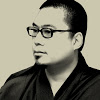





































































































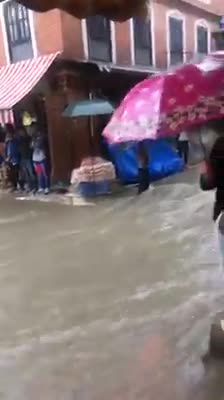
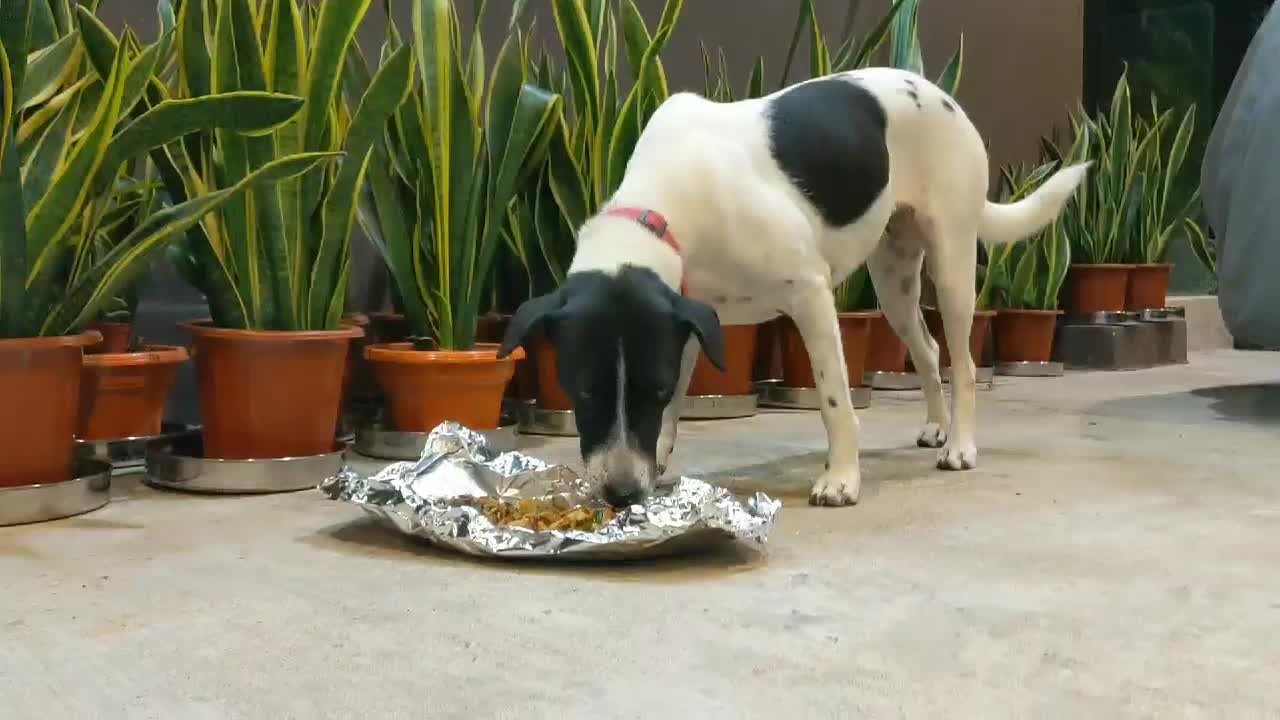

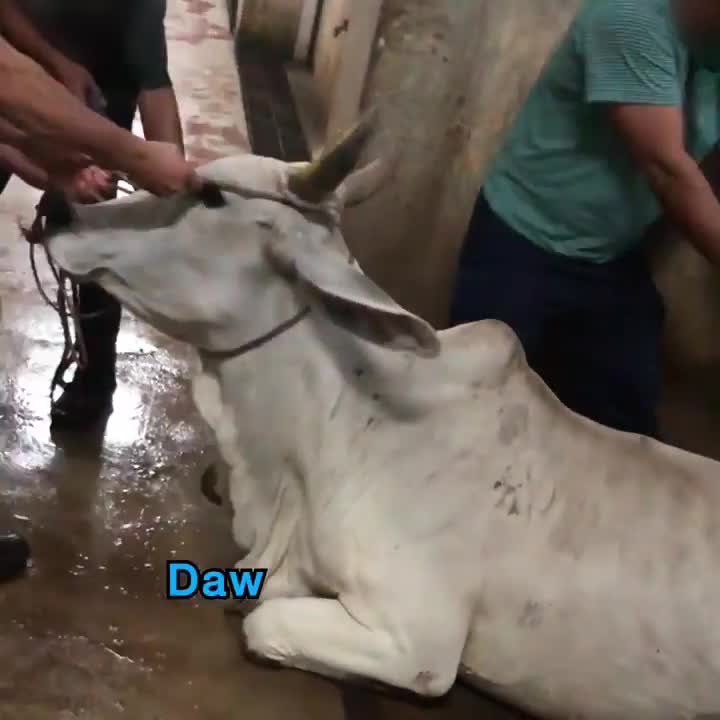

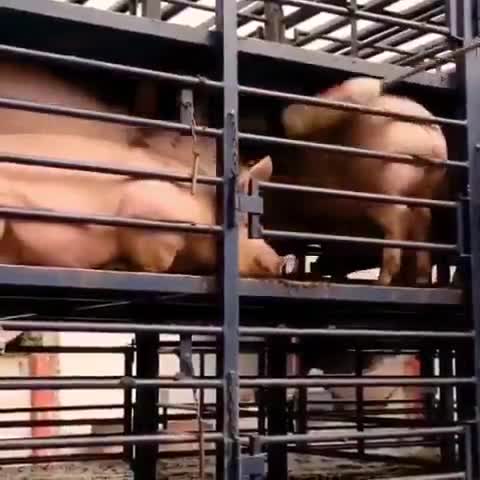


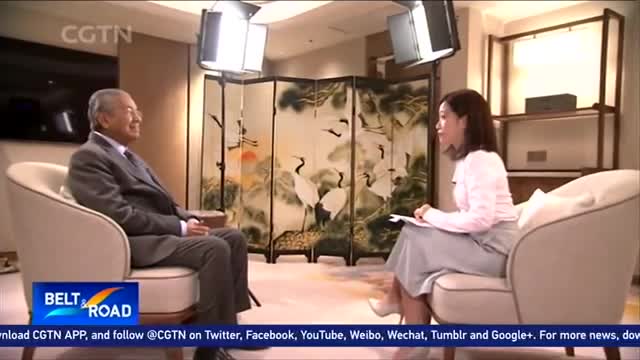
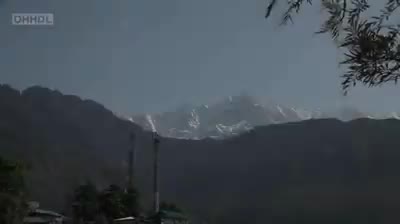
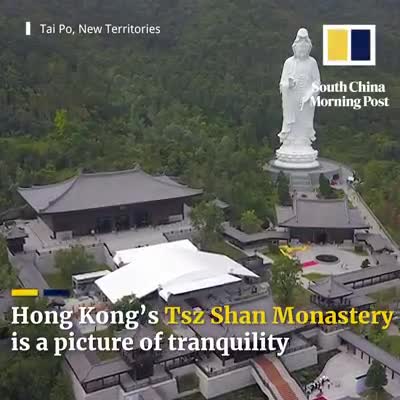

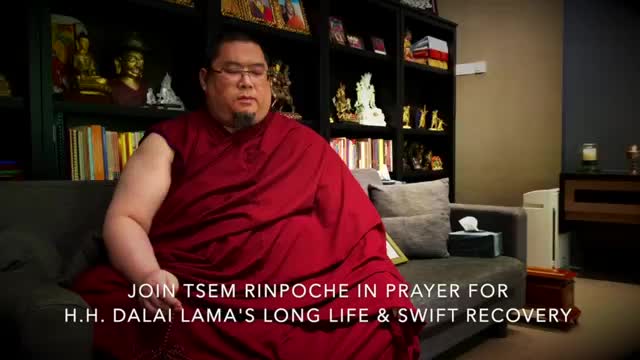
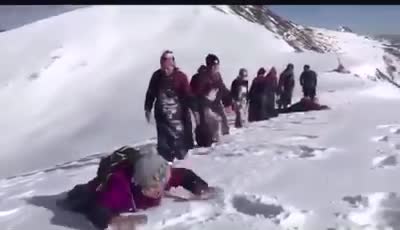
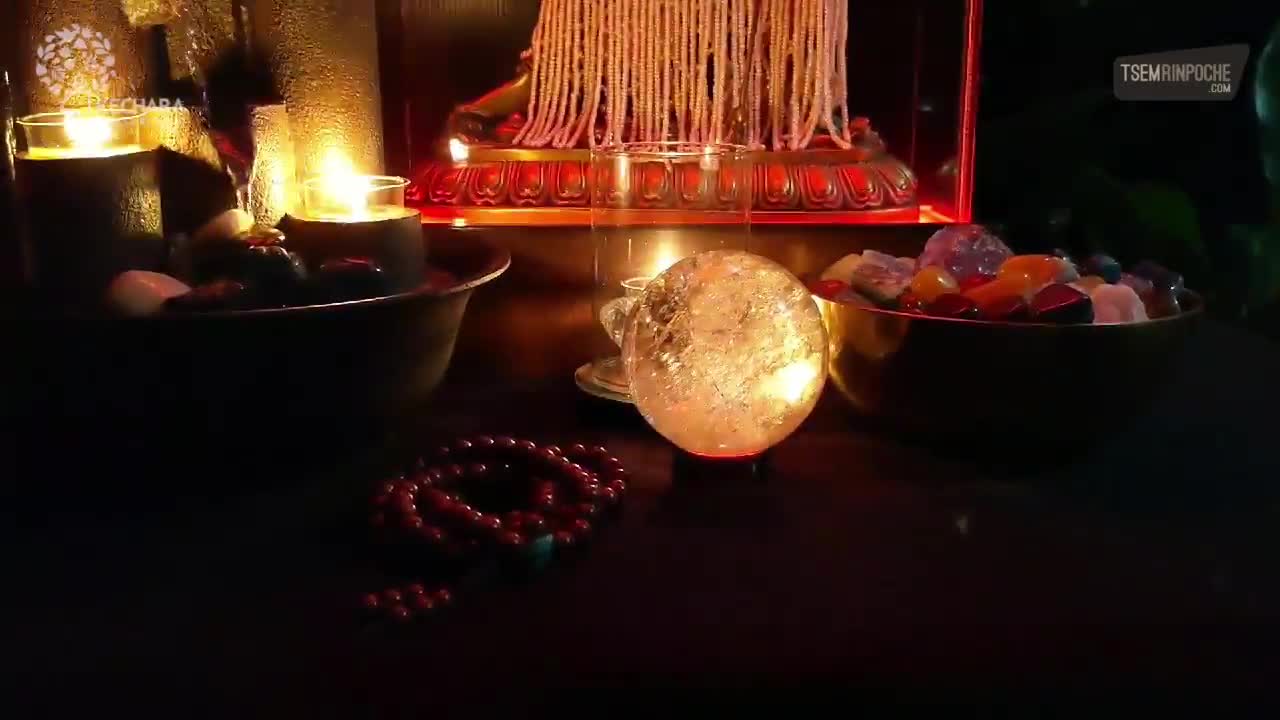
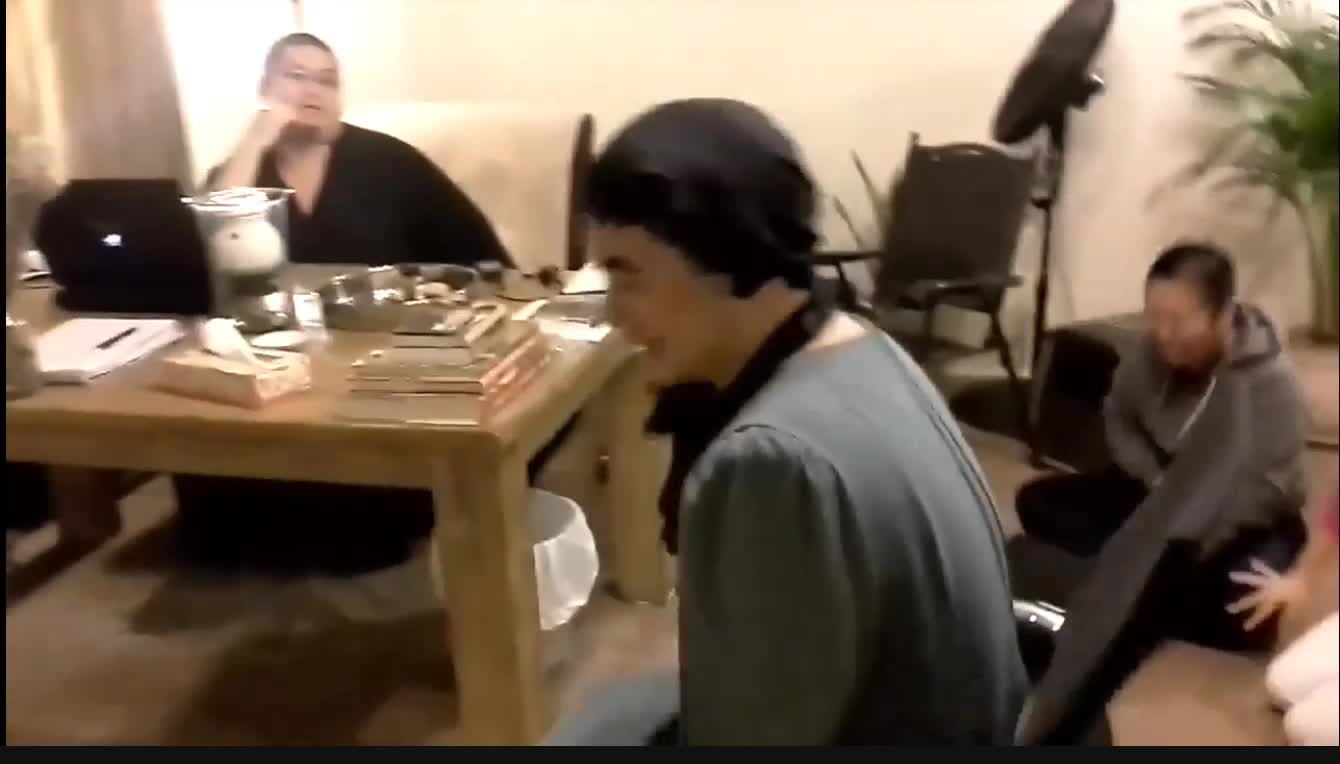
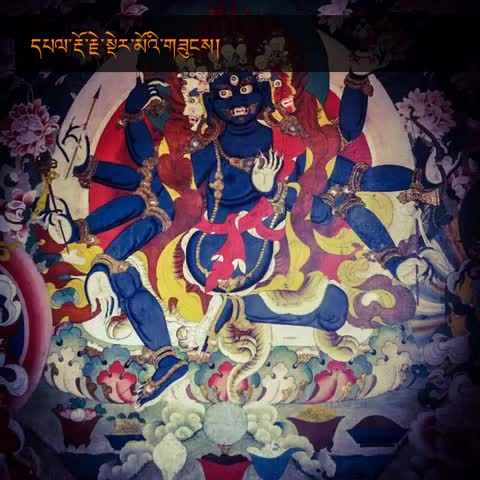
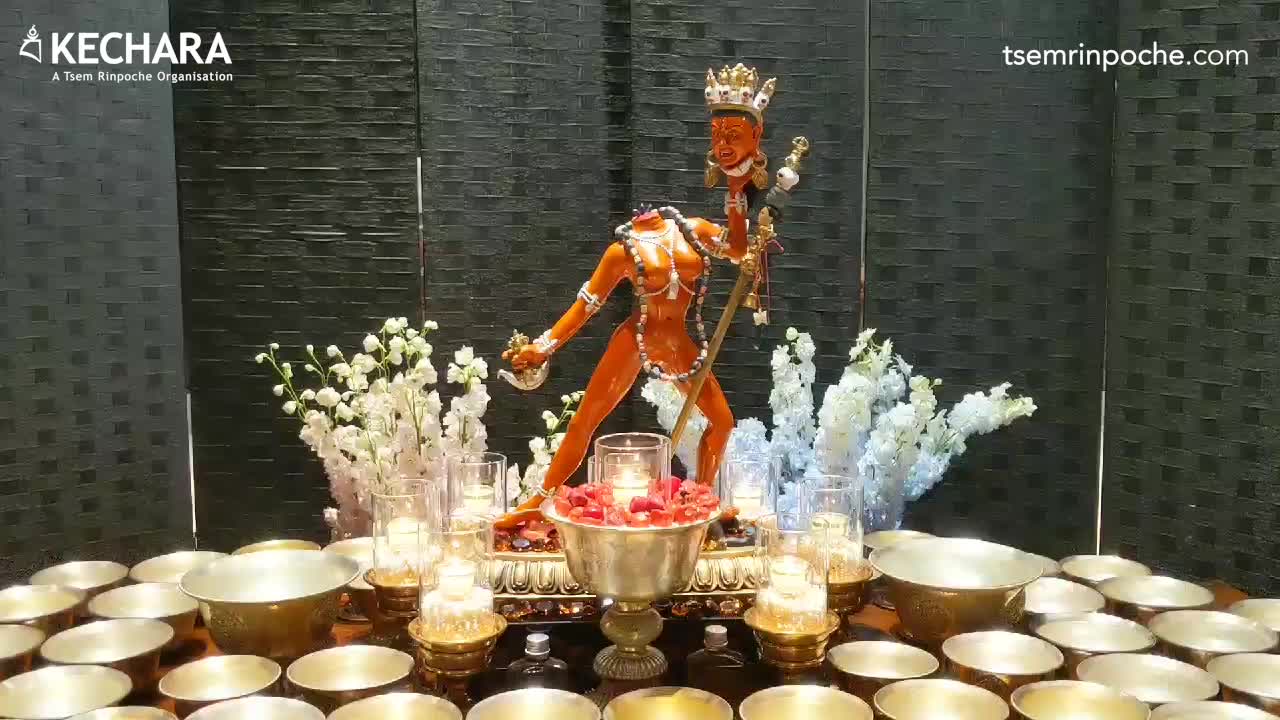

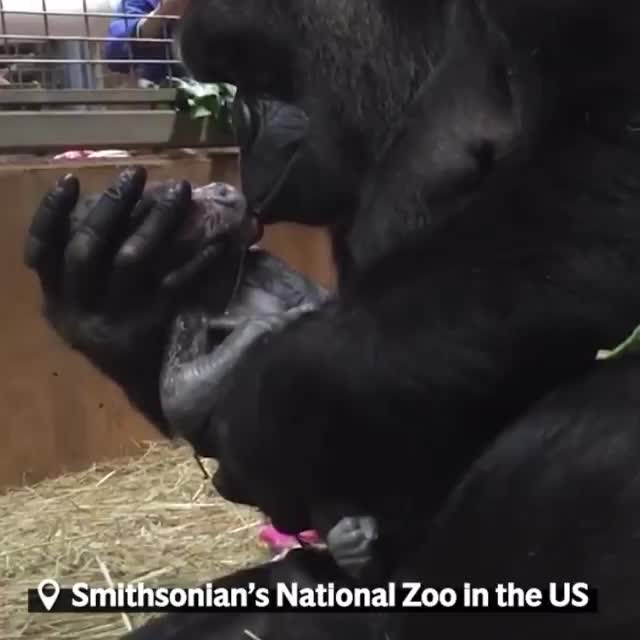
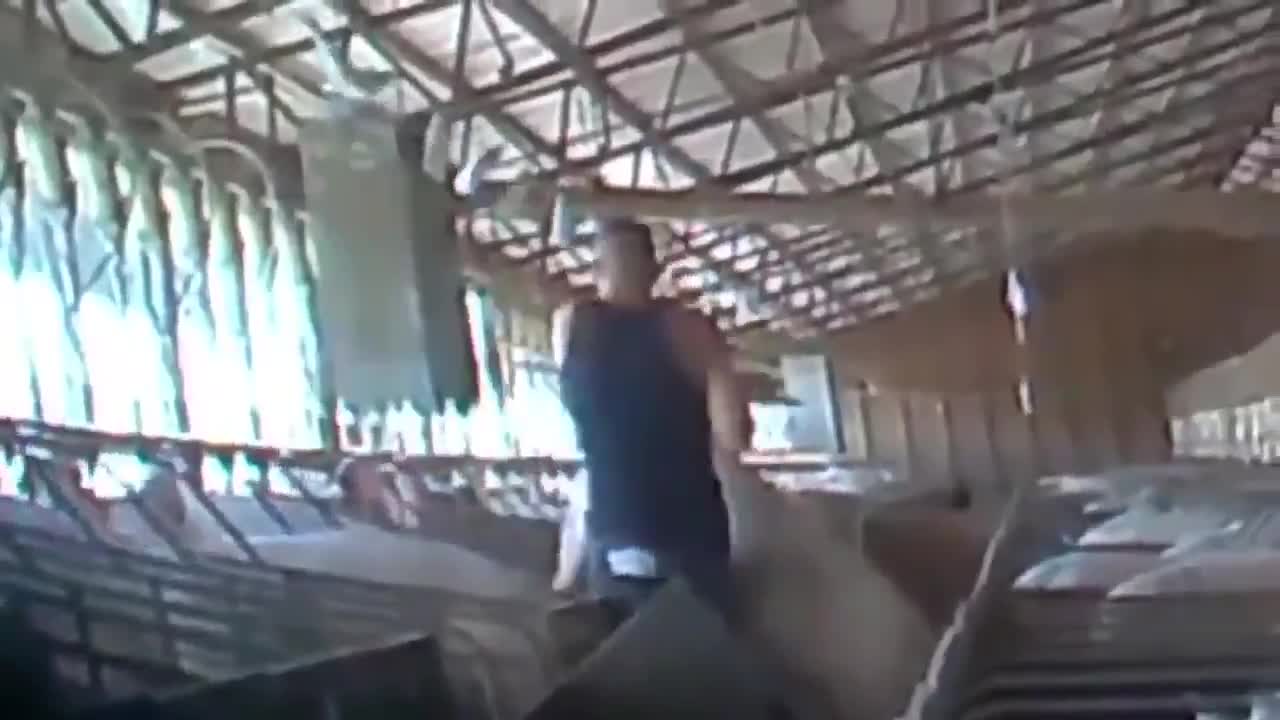

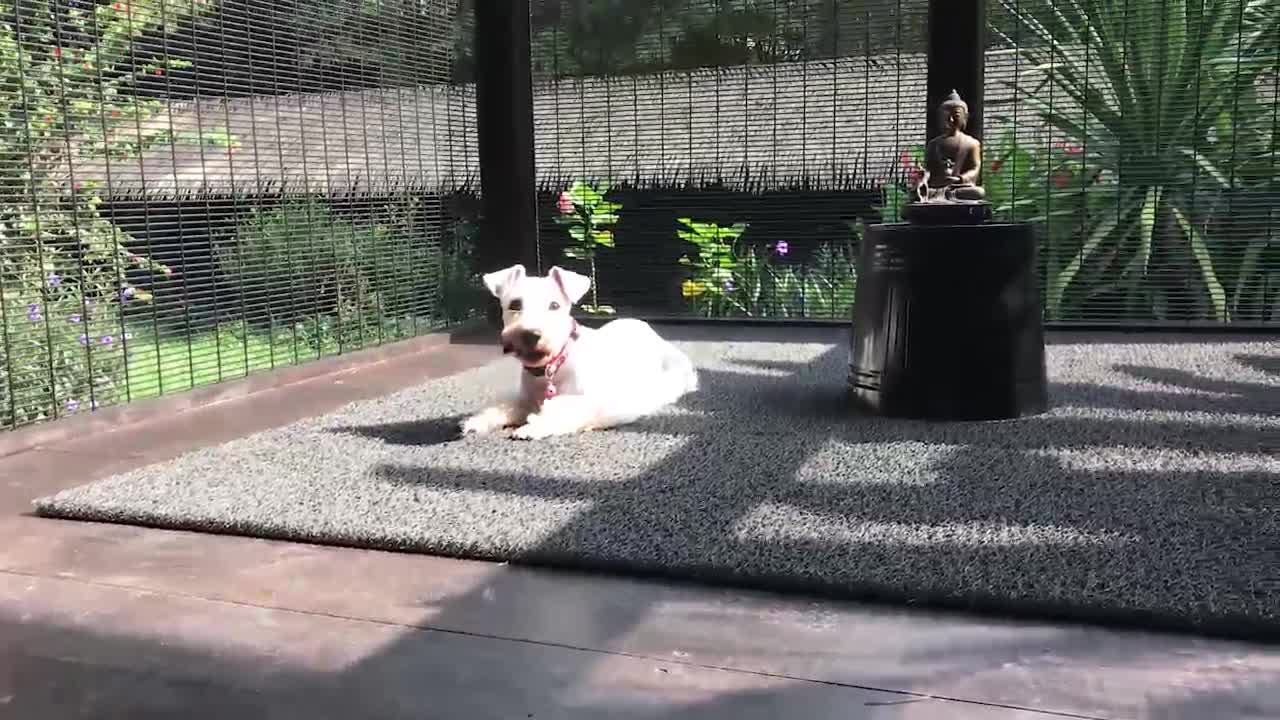
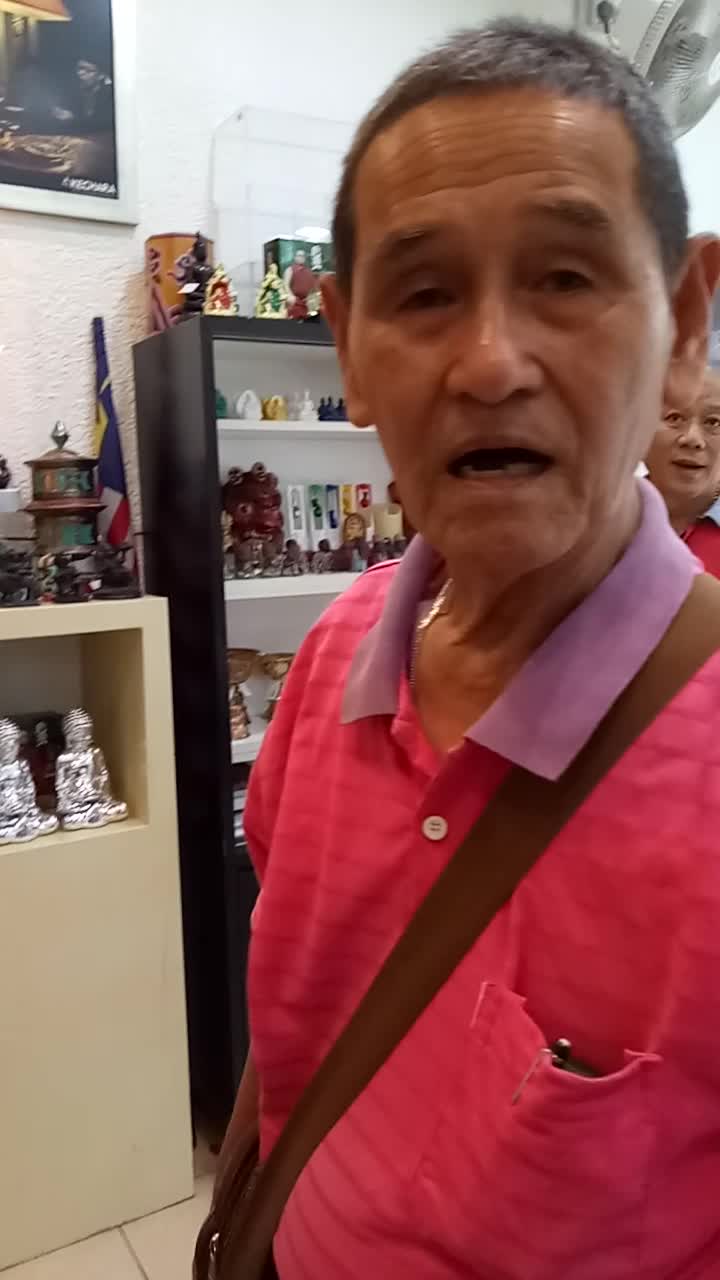







































































The great Protector Manjushri Dorje Shugden depicted in the beautiful Mongolian style. I hope many Mongolians will print out this image and place in their houses to create an affinity with Dorje Shugden for greater blessings. To download a high resolution file: https://bit.ly/2Nt3FHz
The powerful Mongolian nation has a long history and connection with Manjushri Dorje Shugden, as expressed in the life of Venerable Choijin Lama, a State Oracle of Mongolia who took trance of Dorje Shugden among other Dharma Protectors. Read more about Choijin Lama: https://bit.ly/2GCyOUZ
It was not only Professor Kapstein that published any article about the Mongolians not believing the 5th was the real Dalai Lama but it was Tulku Drakpa Gyaltsen.
Here is an email I got from Assistant Professor Chis Bell whom Tsem Tulku has written about in the past. In this email he states that the Georges Dreyful also wrote and article on the same topic with the same finds.
Quote
From
Christopher Bell
Wed, Jan 2, 4:36 PM (21 hours ago)
to me (Harold Musetescu_
Great to hear from you, Harold! I appreciated all your comments via Academia.edu and your previous emails on Shangmo and the like. A larger Shugden book project is still years down the road, but I’ll definitely keep this all in mind. I believe Georges Dreyfus in his Shugden article also talked about some of the voices claiming that Drakpa Gyeltsen was the true 5th Dalai Lama. These conflicting accounts are hard to untangle but definitely fascinating!
Happy New Year!
Chris
Christopher Bell, Ph.D.
Assistant Professor
Stetson University
Department of Religious Studies
Unquote
It appears that your were right in your article about all of this Your Eminence Tsem Tulku Rinpoche.
High beings work on levels and dimensions that us mere mortals can only dream of.
I recall that the Trijang Rinpoche and the Karmapa played a game that they swapped their incarnations. Karmapa became Trijang Rinpoche and vice versa and they played their roles perfectly. Buddhas are similar to one another, like pouring water into another receptacle for water.
This is certainly an interesting article. During the search of the 5th Dalai Lama, other than the later chosen candidate as the 5th Dalai Lama, there is another boy that is surrounded by miracles and auspicious signs will the boy which was later known as Tulku Drakpa Gyeltsen.
It was said that due to politics and personal gains, perhaps the wrong boy was chosen to be the 5th Dalai Lama. When both of the boys are growing up, they are as good as each other in terms of study and shows signs of being an extraordinary being. They were close Dharma brothers despite the people around them view them as competitions.
Eventually, the 5ft Dalai Lama grew up to be a huge influential lama that unified Tibet while Tulku Drakpa Gyeltsen arose as Dharma Protector when he was murdered by the assistants of the 5th Dalai Lama due to his rising fame and power. Tulku Drakpa Gyelse is attainments can be said to be on par with the 5th Dalai Lama and hence there is a possibility that he is the real 5th Dalai Lama.
Thank you for sharing. Good research.???
What if avitlokeshevra hasnt recarninated since the 4th dalai lama
Dear Tsem Tulku
Could you please ask the Panglung Oracle to allow Dorje Shugden to take trance of him.
You could then find out from Dorje Shugden if the Mongolians were right that Tulku Drakpa Gyeltsen was and is the true unmistaken Dalai Lama.
Merry Christmas
The monks of Tengyeling Monastery in 1910 also knew what the “General” of the Mongolian Army in Lhasa knew.
They both knew that the Dalai Lama was not the true Dalai Lama but a total fake.
From 1910 through 1912 the monks of Tengyeling Monastery fought side by side the with Chinese troops garrisoned at their Monastery.
The monks all fought against the 13th Dalai Lama and his corrupt government.
Many monks were wounds and many monks died in their battle to free Tibet and the Gelugpa sect of this fraud and his Government.
This was the ONE AND ONLY TIME in the history of the Gelugpa Sect that there was an internal CIVIL WAR to oust the Dalai Lama.
Who told these monks to fight against the 13th Dalai Lama and his Government?
It was none other than Kache (Tsiu) Marpo the Dharma Protector of both Tengyeling Monastery and their leader H.H. Demo Tulku (who was MURDERED by the 13th Dalai Lama and his corrupt government).
Yes it was the “First Minister” of King Dorje Shugden who through the Tengyeling Oracle told the monks to rise up and overthrow the Dalai Lama and his Government.
Please read the two articles that H.E. Tsem Tulku posted on this website regarding the truth about the MURDERS of H.H. Demo Tulku, Nyari Tulku, Methar (who is now a Dharmapala in the retinue of Dorje Shugden), the Oracle of Tengyeling and the DESTRUCTION of Tengyeling Monastery.
The article are ” Methar of Tengyeling” and the other on Nyatrul aka Nyari Tulku.
That you Tsem Tulku for finally telling the world the truth about what happened at Tengyeling Monastery.
So know you know that it just wasn’t the Mongolian General who thought that the 5th Dalai Lama was a total fake.
Please remember H.H. Demo Tulku, Nyari Tulku, Methar and Tengyeling Monastery in your thoughts and prayers.
Kache (Tsiu) Marpo also knew this to be the truth and told the world through the
Tengyeling Oracle in 1910.
That you Your Eminence Tsem Tulku for the wonderful article you have written.
If the 5th Dalai Lama had found out the highest ranking Mongolian an others in Lhasa were questioning whether he was the true Dalai Lama what would he do?
If he knew that these Mongolians including the “LORD” of the Mongolian Military Government in Lhasa thought that Tulku Drakpa Gyaltsen was in fact the true 5th Dalai Lama what would he do?
Did the 5th Dalai Lama fear that the “Head” of Mongolian Buddhism and the “Khan” were aware of the suspicions their “General” in Lhasa held?
If the 5th Dalai Lama feared all of the above what would he do?
ORDER THE MURDER TULKU DRAKPA GYALTSEN?
With the murder of Tulku Drakpa Gyaltsen the 5th would have no fear of being overthrown by the Mongolian Khan and his troops and replaced by Tulku Drakpa Gyeltsen.
To avoid suspicion the 5th could make it look like it was done by rogue monks as an act of revenge without his knowledge or consent.
Or the Dalai Lama and his government could create a false story that Tulku Drakpa Gyeltsen had committed SUICIDE.
If the Mongolians in Lhasa were right then the 5th Dalai Lama was a total fraud.
All bought and paid for by corrupt noble families and corrupt members of the Dalai Lama’s governments.
If they were right then it means that the 5th, 6th, 7th, 8th, 9th, 10th, 11th, 12th, 13th and 14th Dalai Lama’s were and are all total frauds.
That Tulku Drakpa Gyeltsen has been the TRUE DALAI LAMA all the way back from the 5th to the present 14th Dalai Lama.
The present day Tengyeling Oracle has been saying this for years.
Thank you Tsem Tulku for this most insightful article.
It should open up everyones eye to a new way of see Tulku Drakpa Gyeltsen.
AS THE TRUE DALAI LAMA!!!
Mantras are sacred verbalized words that invoke the protection and blessings of the deity to whom the mantra is ascribed. Mantras are also the manifestations of Buddhas in the form of ‘sounds’, hence the various mantras of Dorje Shugden contain the essence of the Protector.
Dorje Shugden’s main mantra 多杰雄登主要咒语
OM BENZA WIKI BITANA SOHA
Dorje Shugden’s mantra for peace 平和咒语
For gaining attainments through the energy of Peaceful Shugden, peace of environment and mind, harmony in one’s abode and dwelling area, and calming of disasters
OM BENZA WIKI BITANA SHANTI SIDDHI HUNG
Dorje Shugden’s mantra for health 福寿安康咒语
For long life, increasing life, healing of disease and protection from diseases
OM BENZA WIKI BITANA AYU SIDDHI HUNG
Dorje Shugden’s mantra for increase 增长咒语
For gaining great merits and increase of all necessary needs, both material and spiritual
OM BENZA WIKI BITANA PUNYE SIDDHI HUNG
Dorje Shugden’s mantra for control 控制咒语
Of worldly deities, negative people and nagas and for influencing friends towards the positive
OM BENZA WIKI BITANA WASHAM KURU HO
Dorje Shugden’s mantra to grant protection 庇护咒语
Visualize that you are in the Protector’s mandala, fully protected from outside interferences. Recite when in danger or for dangerous situations, for protection while travelling or when residing in dangerous/hostile places
OM BENZA WIKI BITANA RAKYA RAKYA HUNG
https://video.tsemtulku.com/videouploads/comment-1544345059.mp4
Fascinating information Tsem, thank you for sharing. I came across this while Googling for information about termas and their validity. I was always under the impression that Shugden is a malevolent being, at least that’s what I was told, but that thought never did fully sit right with me. I always had a small element of doubt because I was always told that the Dalai Lama’s tutor relied on him and that in his previous life he had been a great lama, Tulku Dragpa Gyaltsen. Your post here just confirmed it. He was so great, the Mongols actually thought he was the 5th Dalai Lama and Lelung had it recorded all along.
Having said that, what I found odd about that particular episode of Tibetan history is the Tibetan government has never denied that Tulku Dragpa Gyaltsen was murdered. What THEY say is that he became a spirit after he was murdered.
Now what struck me as odd about that is why they’re trying to suppress him now. I’m not saying he’s a spirit or not a spirit, I’m not concluding either way. Personally, I don’t practice Shugden and have never felt the need to. But it occurred to me that if what the Tibetan government says is true, that Shugden is a spirit because of a murder committed by one of THEIR people, then what they should be doing is apologizing for their actions and trying to make amends. They were the one who murdered somebody, so why are they blaming Shugden if he’s angry? They gave him a reason to be angry by murdering him! Well, I’m not saying appease the spirit but I’m saying well, if he’s vengeful, it must mean he’s got a reason for it or he’s got something to avenge. So figure out what it is and resolve it so Shugden no longer has a reason to be angry. That makes so much more sense to me than talking over and over again about his bad qualities. What good is that going to do? Instead of spending all your time warning people off of him, why not just neutralize whatever reasons he’s got to be so angry?
Anyway thanks for your great work Tsem, very useful what you publish on your blog. I’m in a place where there are few Dharma centers so the work you put out is extremely helpful to my practice.
Mason, your take on this is interesting. I read about this subject some 16 years ago and was a little perturbed how a murder can happen in a high office. Being a ‘fledgling’ practitioner, I was best to keep my opinion or what I read to myself. There weren’t many articles online those days, too. This blog has given me much ‘food’ for thoughts and as time goes, there seems to be more clarity in my understanding…
Dorje Shugden arose some 350/400 years ago to protect a certain lineage teachings and at the point of his murder, wrath manifested – which ‘IMHO’ is distinct from anger.
Besides, with so many high lamas around at that time, how was it that they were unable to subdue an ‘angry spirit’? Perhaps because he wasn’t an ‘angry spirit’ but one in nature with The Blessed One – the Universal Conqueror.
This latest article about the Mongols believing (with clear objective arguments and reasoning) that Tulku Drakpa Gyeltsen is the actual 5th Dalai Lama is yet more logical evidence to show that he is in NO WAY the vengeful spirit out to harm , that the CTA claims he is . How could the pure monk , believed to be the emanation of Chenrezig , ever be a a spirit?
In any case, there was never any logical evidence, in the first place, to support this unfounded claim. How could the incarnation of the illustrious Panchen Sonam Drakpa ever be a vengeful spirit? Panchen Sonam Drakpa was in his lifetime the 15th Gaden Throne-holder, abbot of the three great “flagship ” monasteries of Lama Tsongkhapa -Gaden, Sera and Drepung, and the prolific writer of 14 texts that still continue to form the main syllabus of most Gelug monasteries till today.
In his own rights, Tulku Drakpa Gyeltsen was an extraordinary holy being even when he was young. Always seeking to benefit others, always sought after as a great teacher, a monk of incredible scholastic achievements and highly attained as well, how could such a great and compassionate being ever become a vengeful spirit?
Again, the claim that the 5th Dalai Lama saw him as a vengeful spirit, is immediately rubbished by what the Dalai Lama actually did upon discovering that Tulku Drakpa Gyeltsen had been murdered. He wrote a lovely praise and prayer for the daily propitiation of Dorje Shugden by everyone. How could a spirit ever be propitiated in this way by the Dalai Lama? He also hand made a statue to Dorje Shugden and built the Trode Khangsar Chapel dedicated to Dorje Shugden. It is in this Chapel that Dorje Shugden would be later enthroned :
“His Holiness the 11th Dalai Lama, the Qing Amban(representative of the Qing Emperor), Reting Rinpoche, the Dorje Shugden oracle and various monks held a grand ceremony in the courtyard of Trode Khangsar, and the pandit’s hat was placed over its doors”.
http://www.dorjeshugden.org/temples/trode-khangsar
Finally, how could a spirit be worshipped as a central figure in this beautiful thangka that Matthew Kapstein came across in Mongolia? This thangka alone establishes, without doubt, that Tulku Drakpa Gyelsten is an enlightened being.
Thank you Rinpoche for sharing this article which once again reminds us how ridiculous is the claim the Tulku Drakpa Gyeltsen became a vengeful spirit.
Very interesting article and findings about Mongolians believing the 5th Dalai Lama is someone else. It’s really discriminating and prejudice that other lamas in Tibetan Buddhist history where the wrong or mistaken candidate was enthroned for financial or political reasons, or because the name had associations with China. Hope history wont repeat itself for future incarnated Lamas. Thank you Rinpoche and writers for sharing such an interesting article ???
The present day Tengyeling Oracle has stated publicly for years that Tulku Drakpa Gyeltsen was the real 5th Dalai Lama. That his title was stolen by wealth noble families and corrupt government officials.
The Oracle has stated that the next Chinese 15th Dalai Lama will be the reincarnation of Tulku Drakpa Gyeltsen. That the Chinese 15th Dalai Lama will the help of the Panchen Lama will make Dorje Shugden the “Protector” of Tibet, the “State Oracle of Tibet” and finally he will make Dorje Shugden a YIDAM.
The Fifth Dalai Lama himself was circumspect with regards to him being the incarnation of the Fourth Dalai Lama.
In Chapter 5 of the book “Lhasa in the Seventeenth Century: The Capital of the Dalai Lamas”, page 69, in an article written for the book by Samten Karmay entitled “The Fifth Dalai Lama and His Reunification of Tibet”, Samten writes:
He retained bitter memories of his childhood during which the philosophical and religious precepts relative to the notion of reincarnation served political purposes. In his writings he would often recall with irony the political manipulations of his own school, which involved the Mongols in all its affairs. Thus he wrote in his autobiography, the Dukula:
Since there was a large Mongol army in the country and the Tibetan leaders were forced to yield much of their land to them, it became customary to recognize the sons of Mongol leaders as reincarnations. It was said that I too was one (even though I was not a Mongol)!
As for his success at passing the traditional “tests”, he is equally straightforward: “The official Tsawa Kachu of Ganden Phodrang showed me statues and rosaries (that belonged to the Fourth Dalai Lama and other people), but I was unable to distinguish between them! When he left the room I heard him tell the people outside that I had successfully passed the tests. Later, when he became my tutor, he would often admonish me and say: ‘You must work hard, since you were unable to recognize the objects!